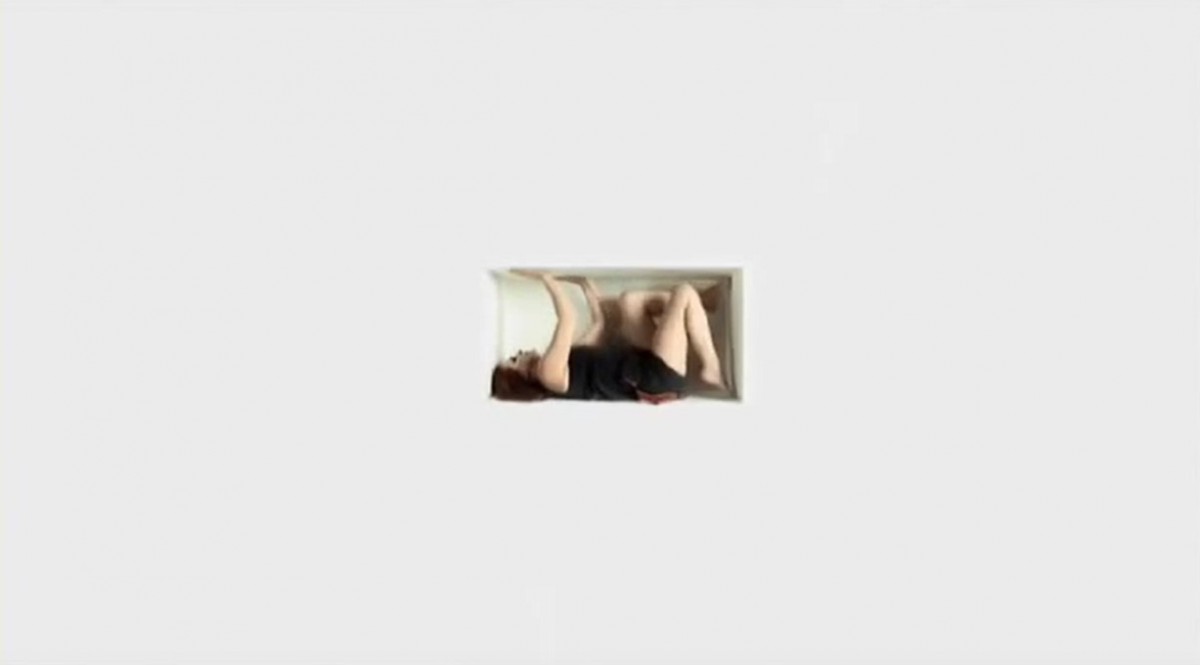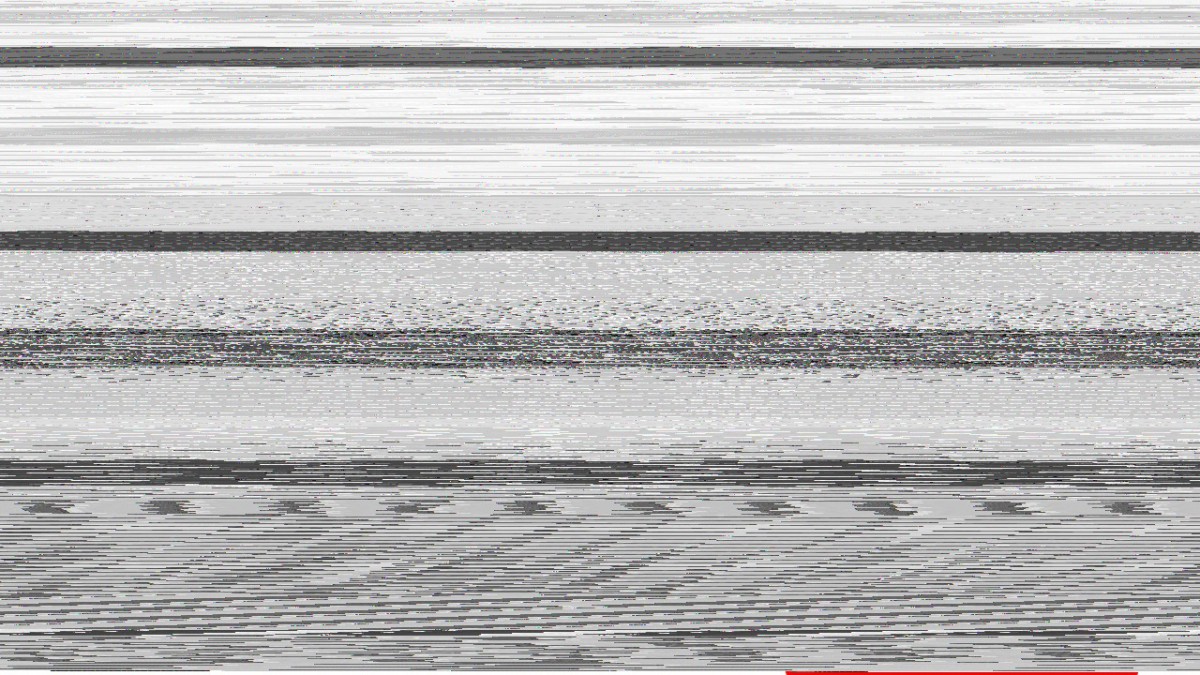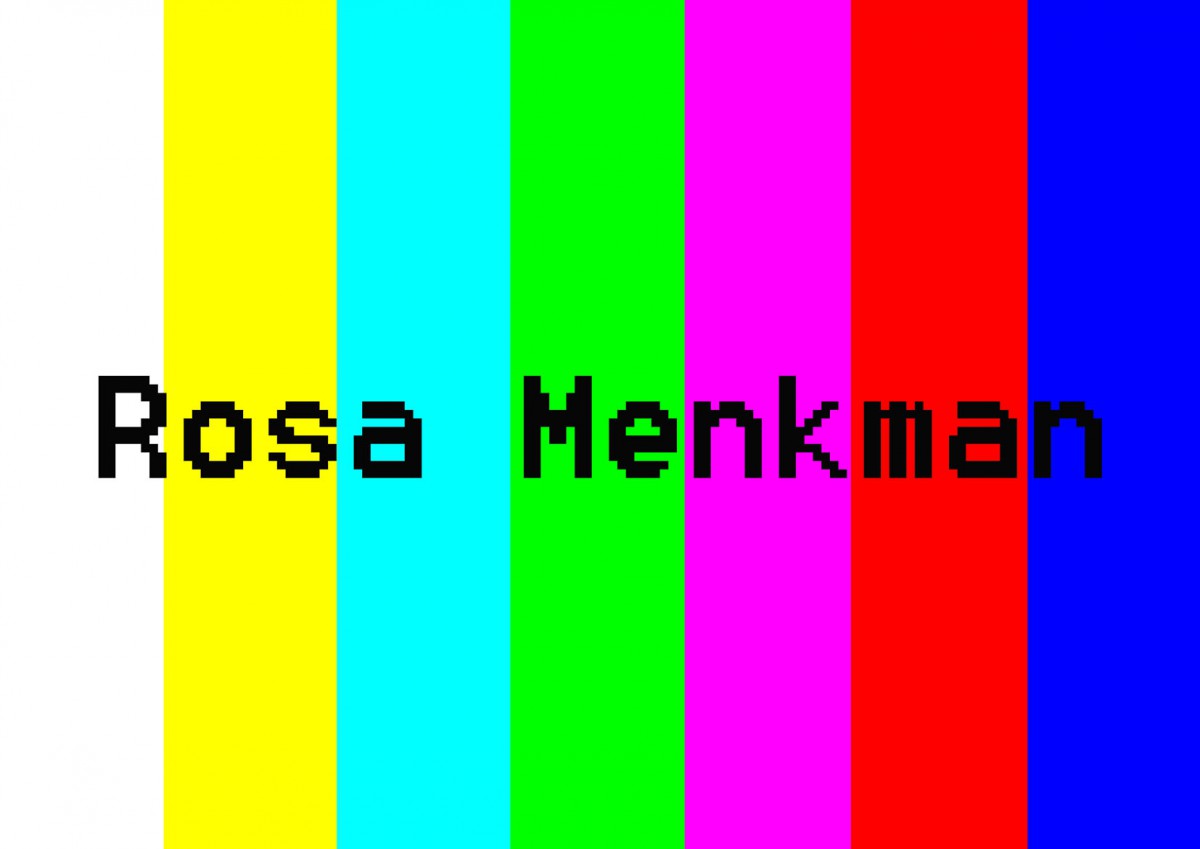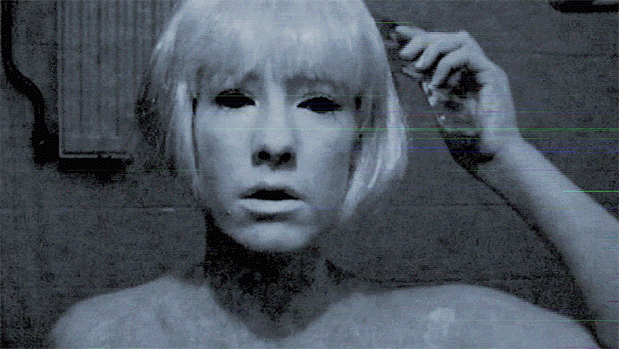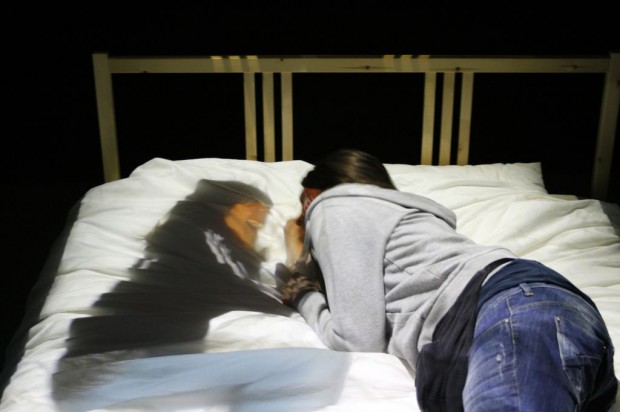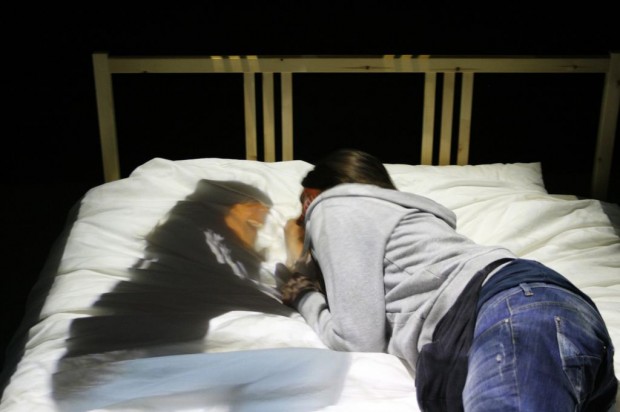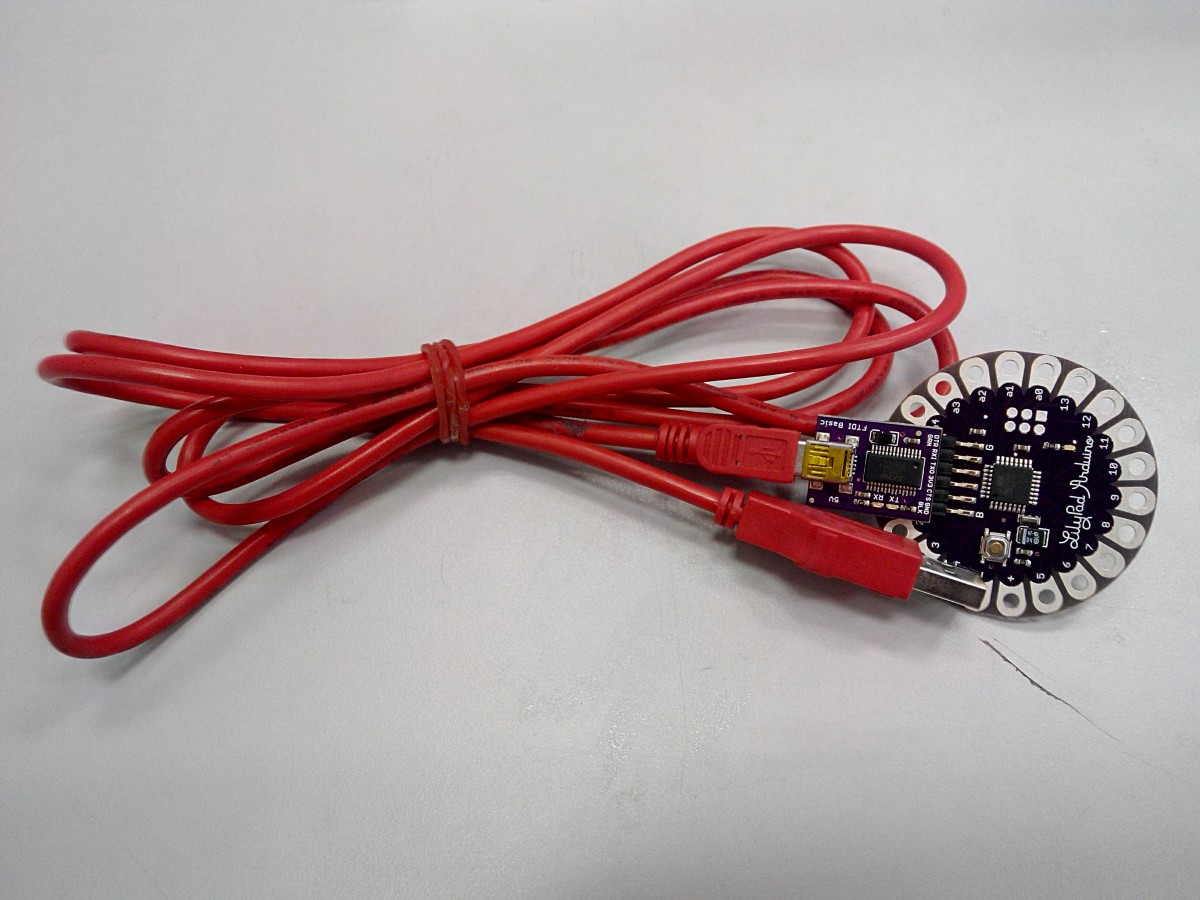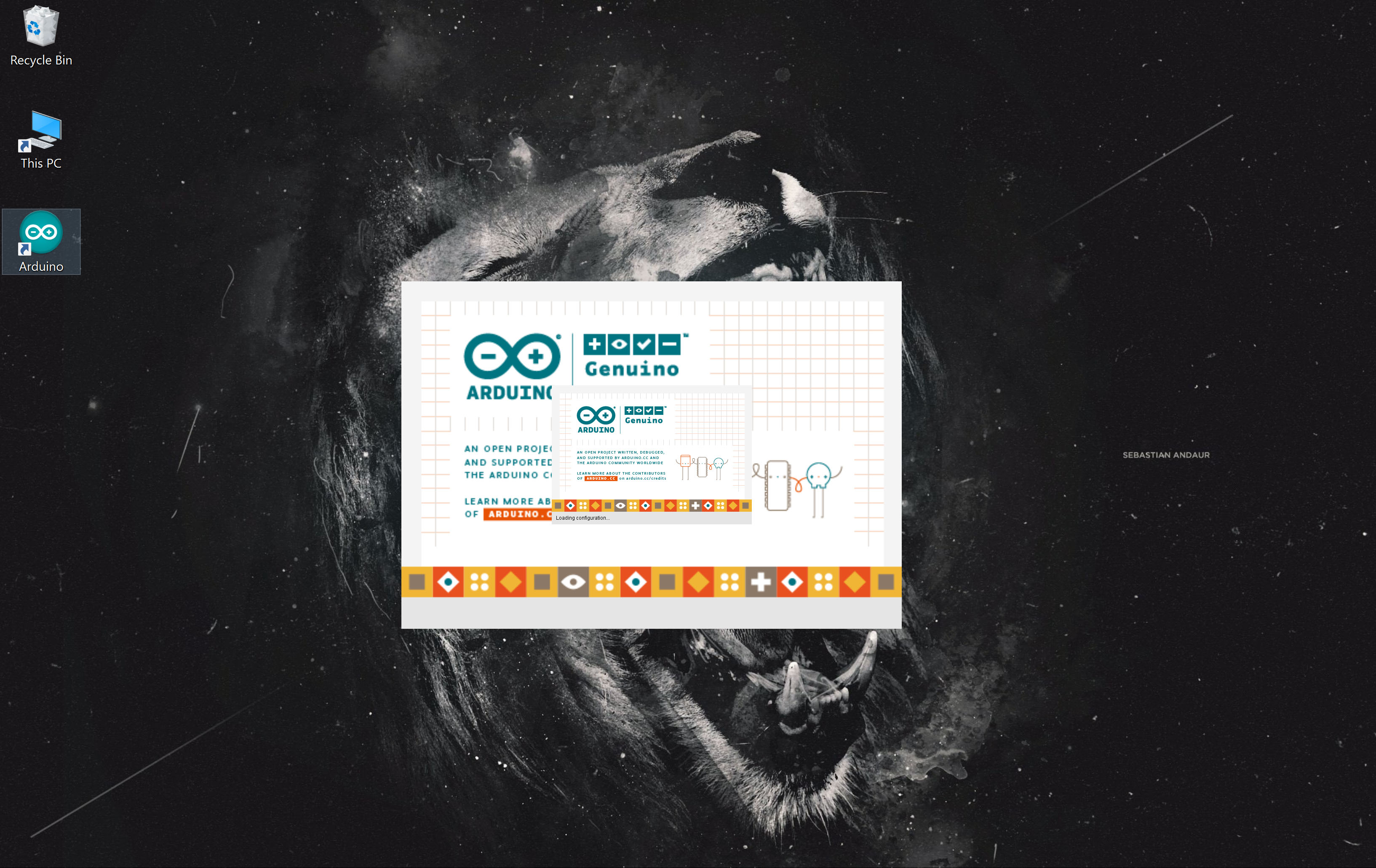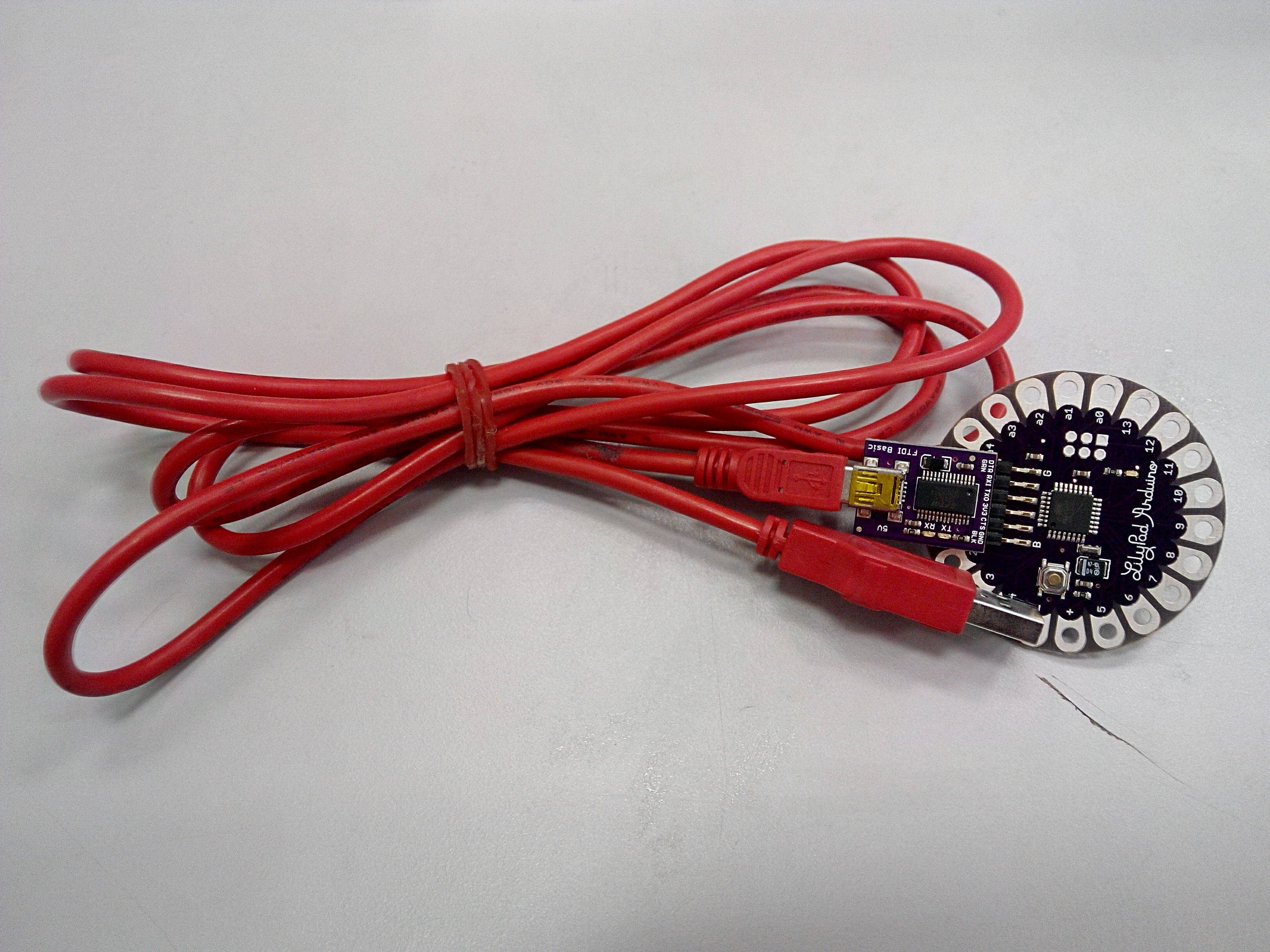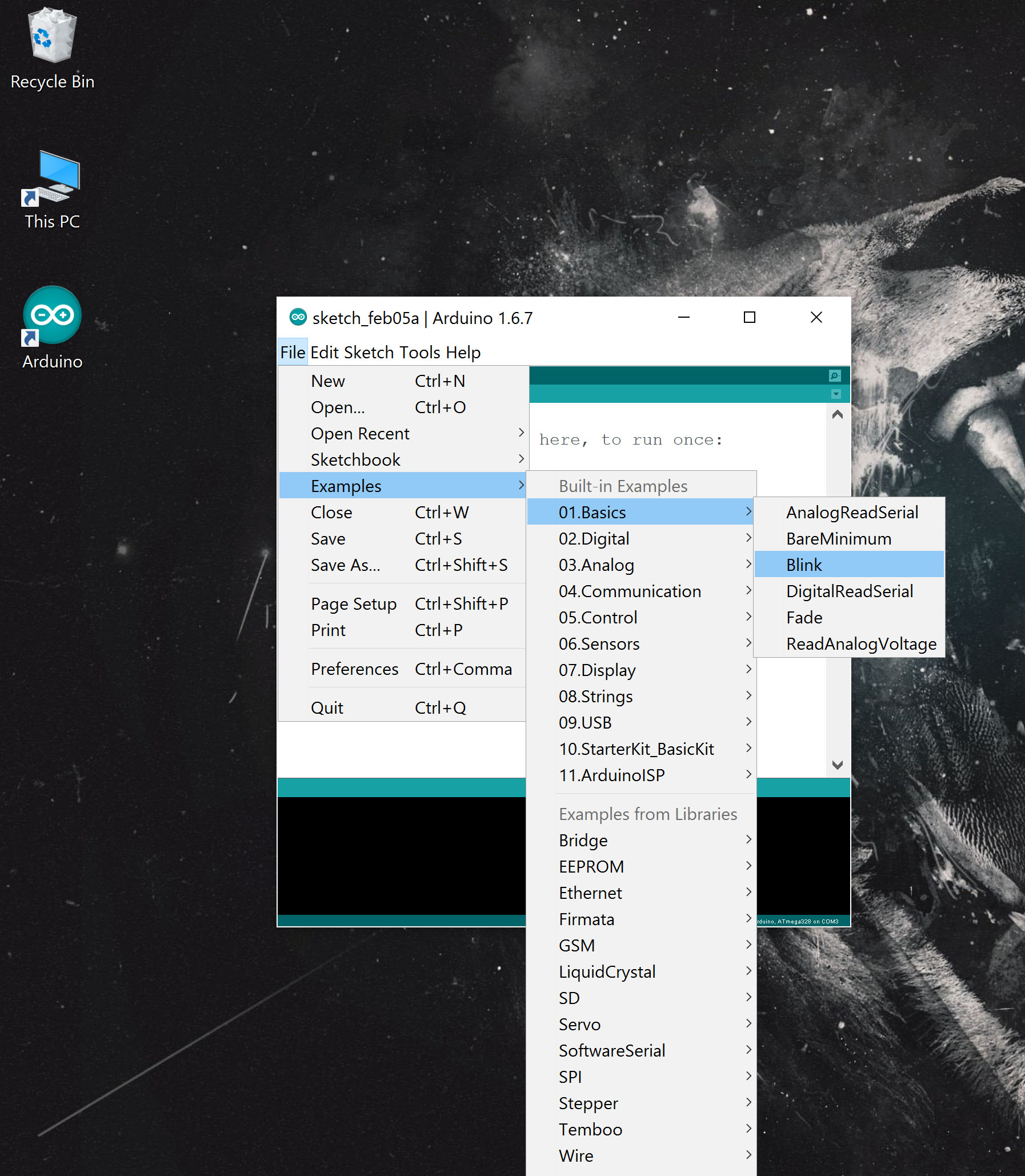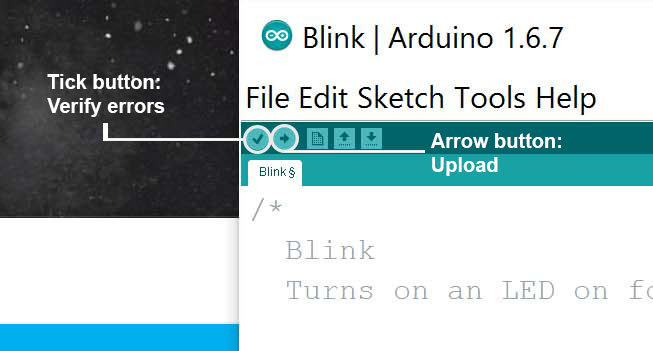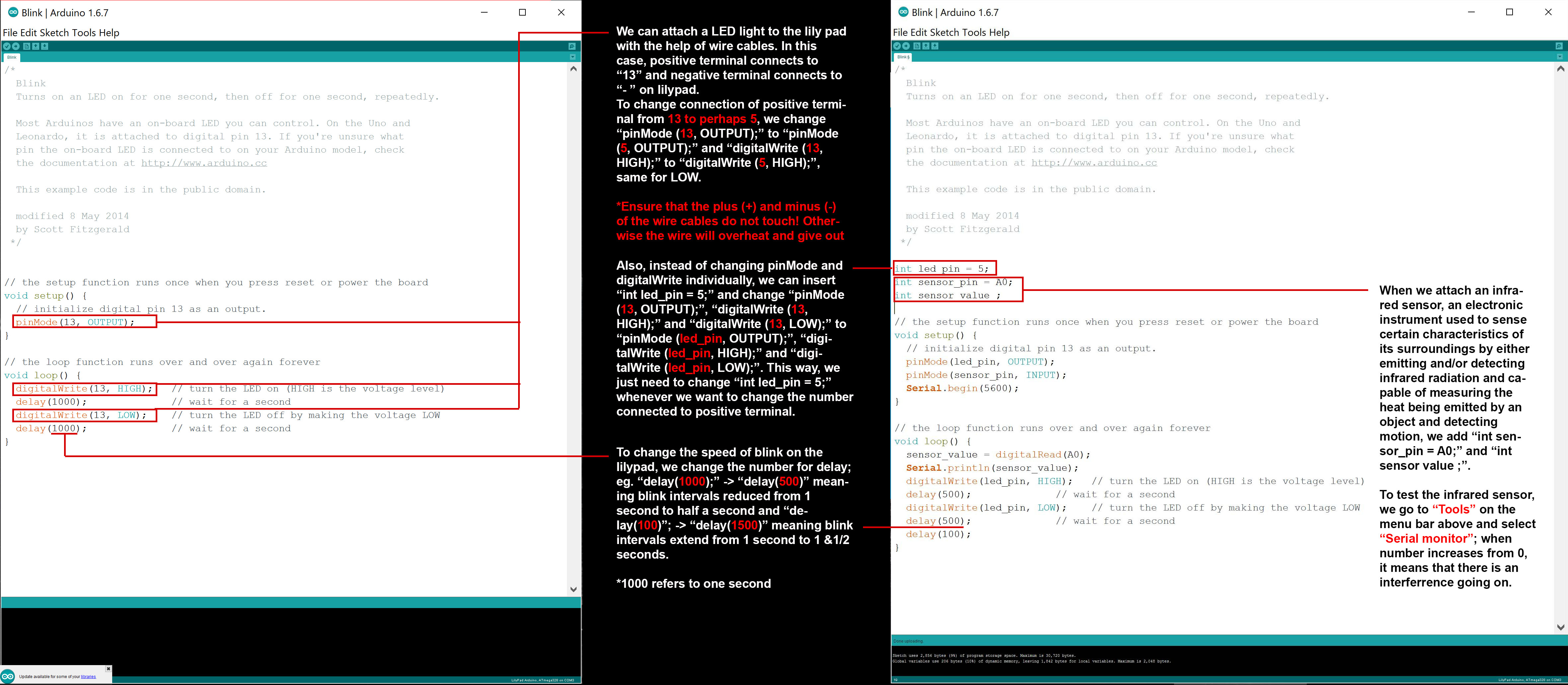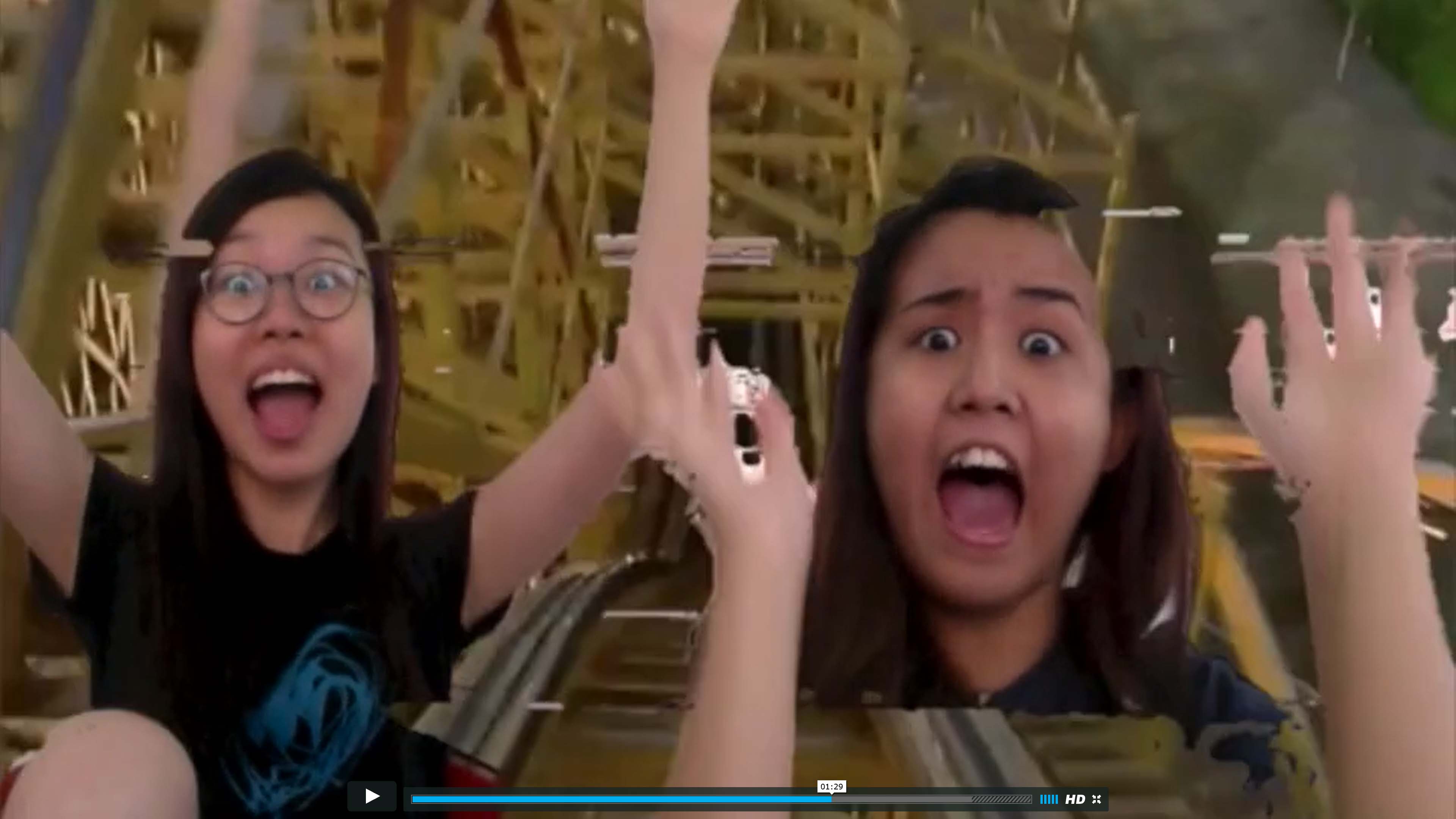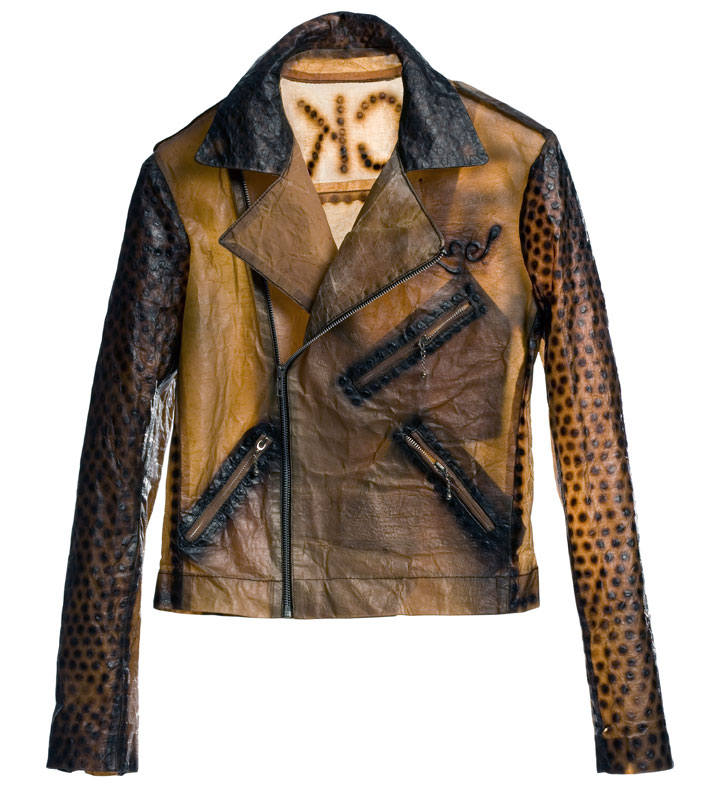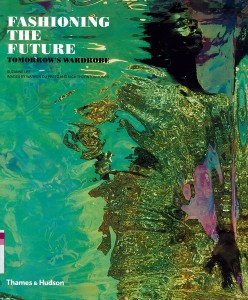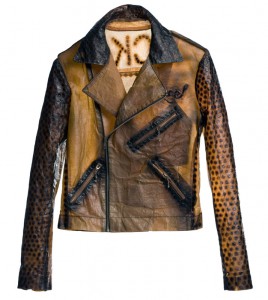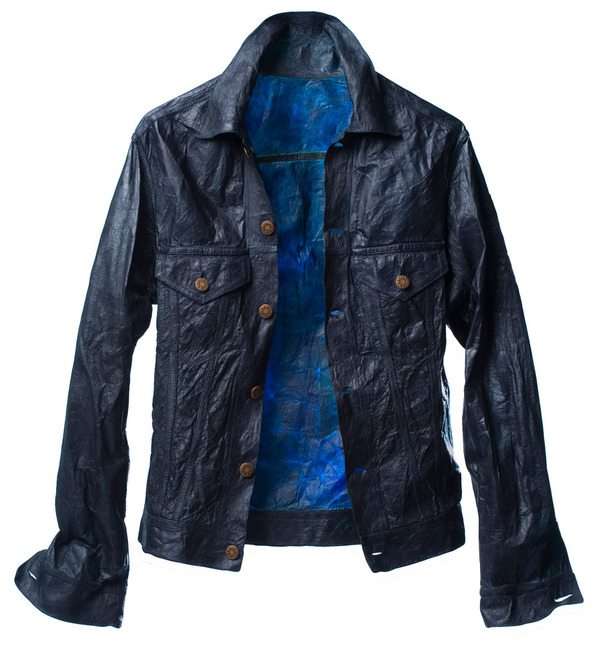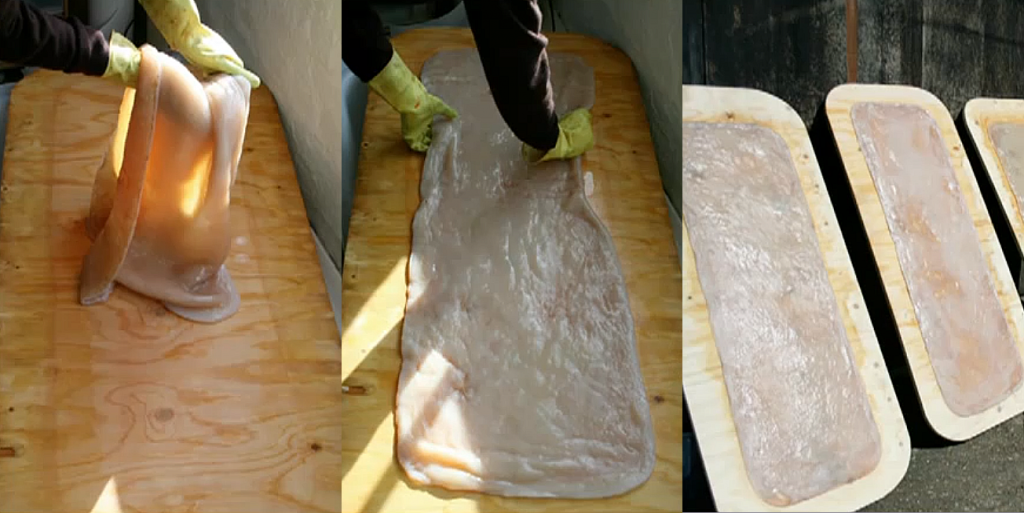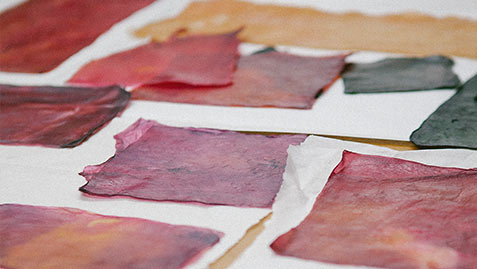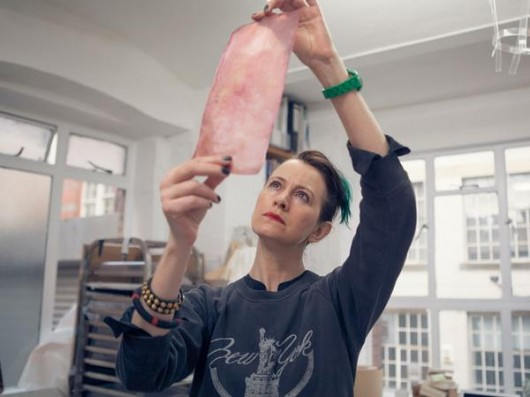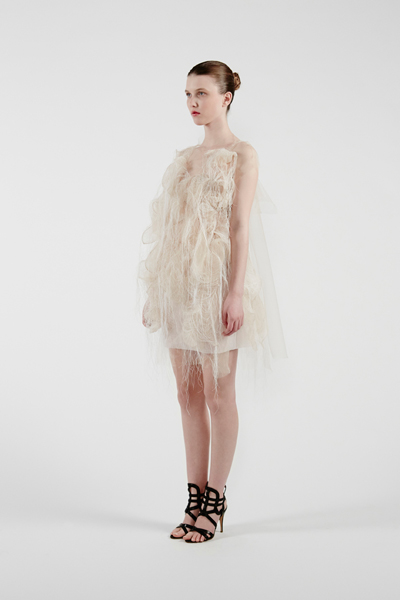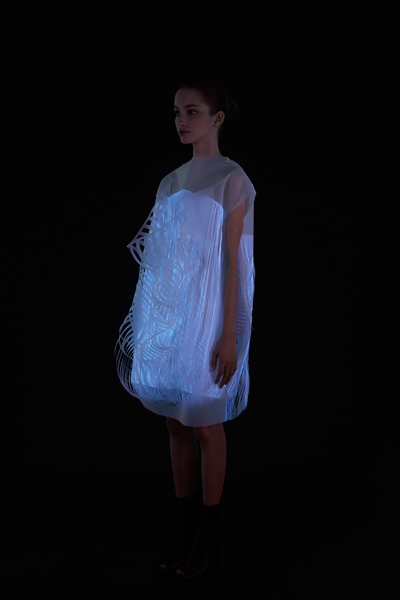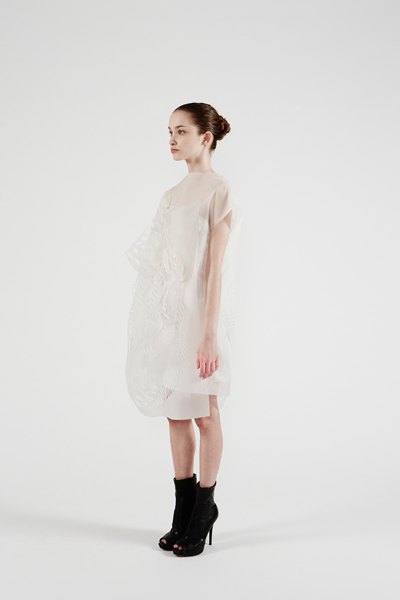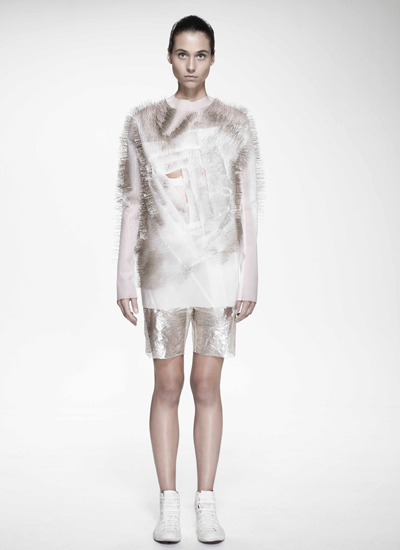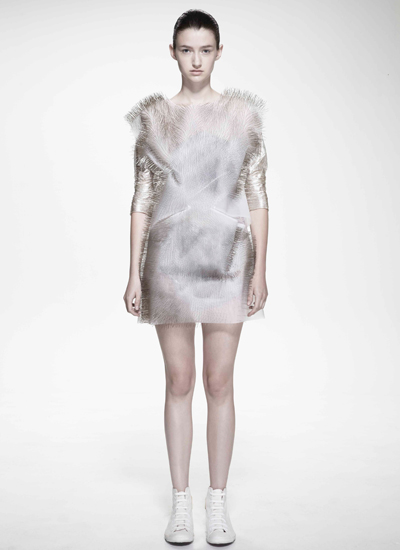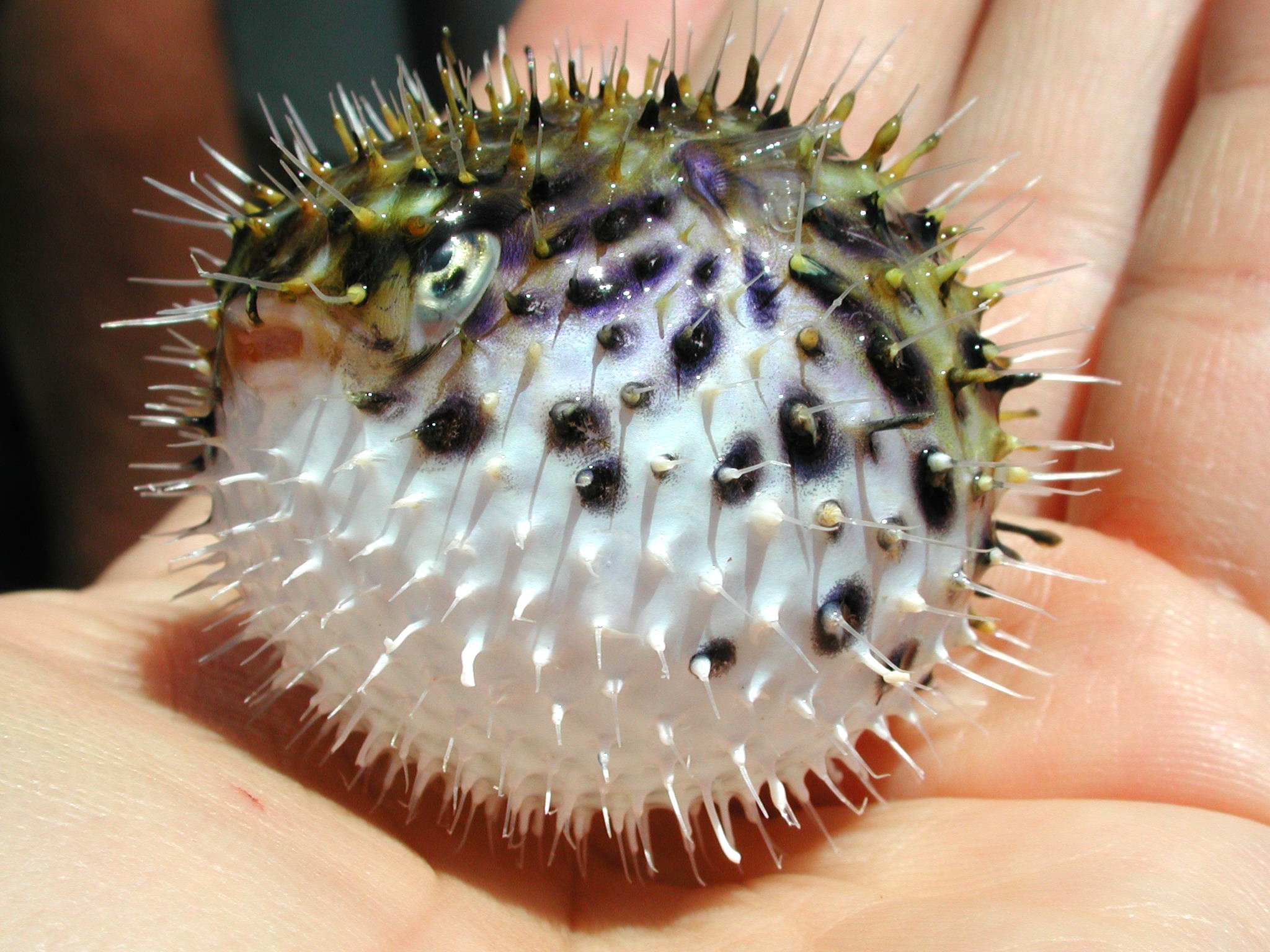Eiko and Koma: My Parents
Gestures & movement:
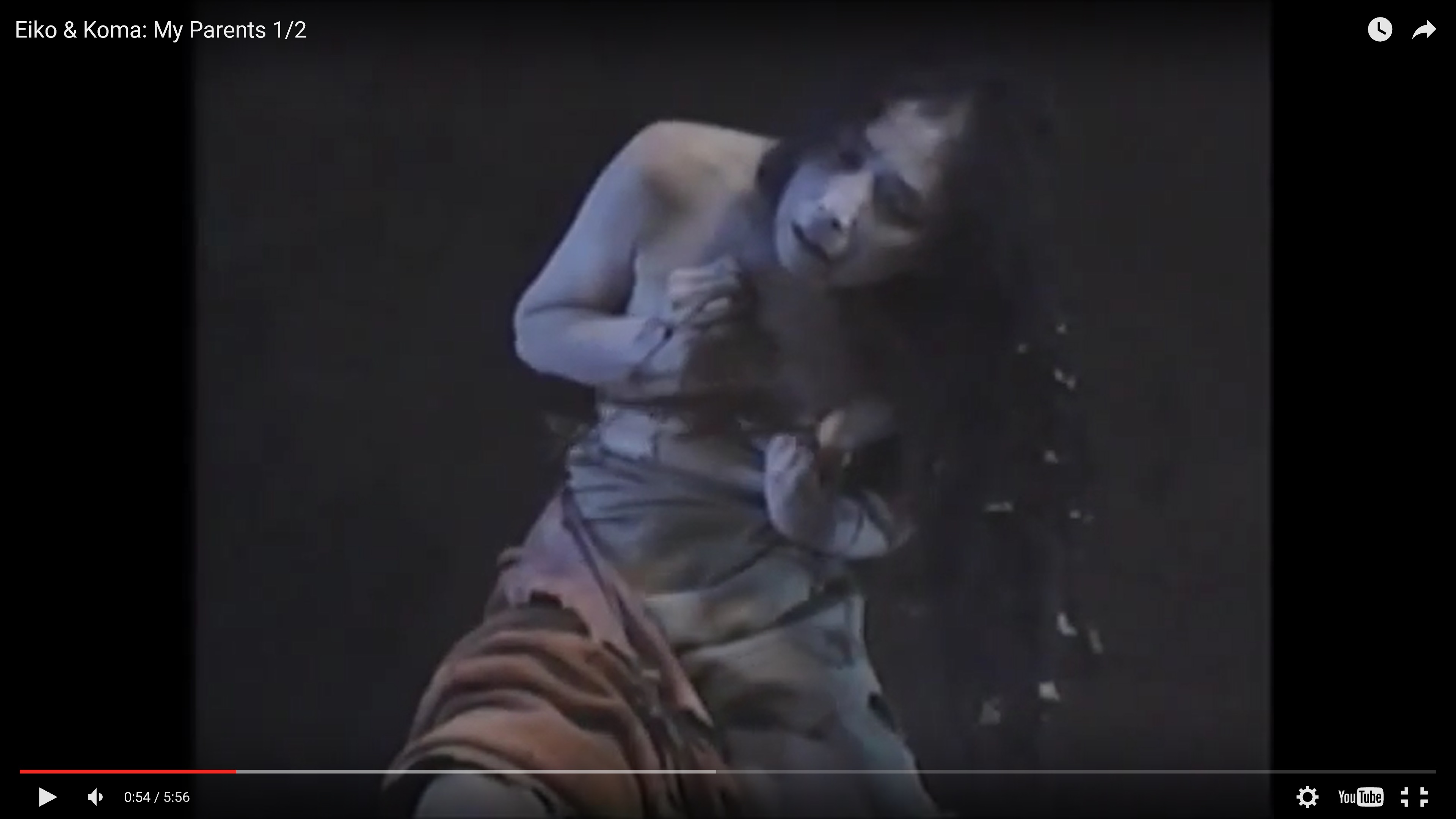
@ 0:54 – A lady grabbing onto twigs placed against her torso with her arms tense and trance-like facial expression.
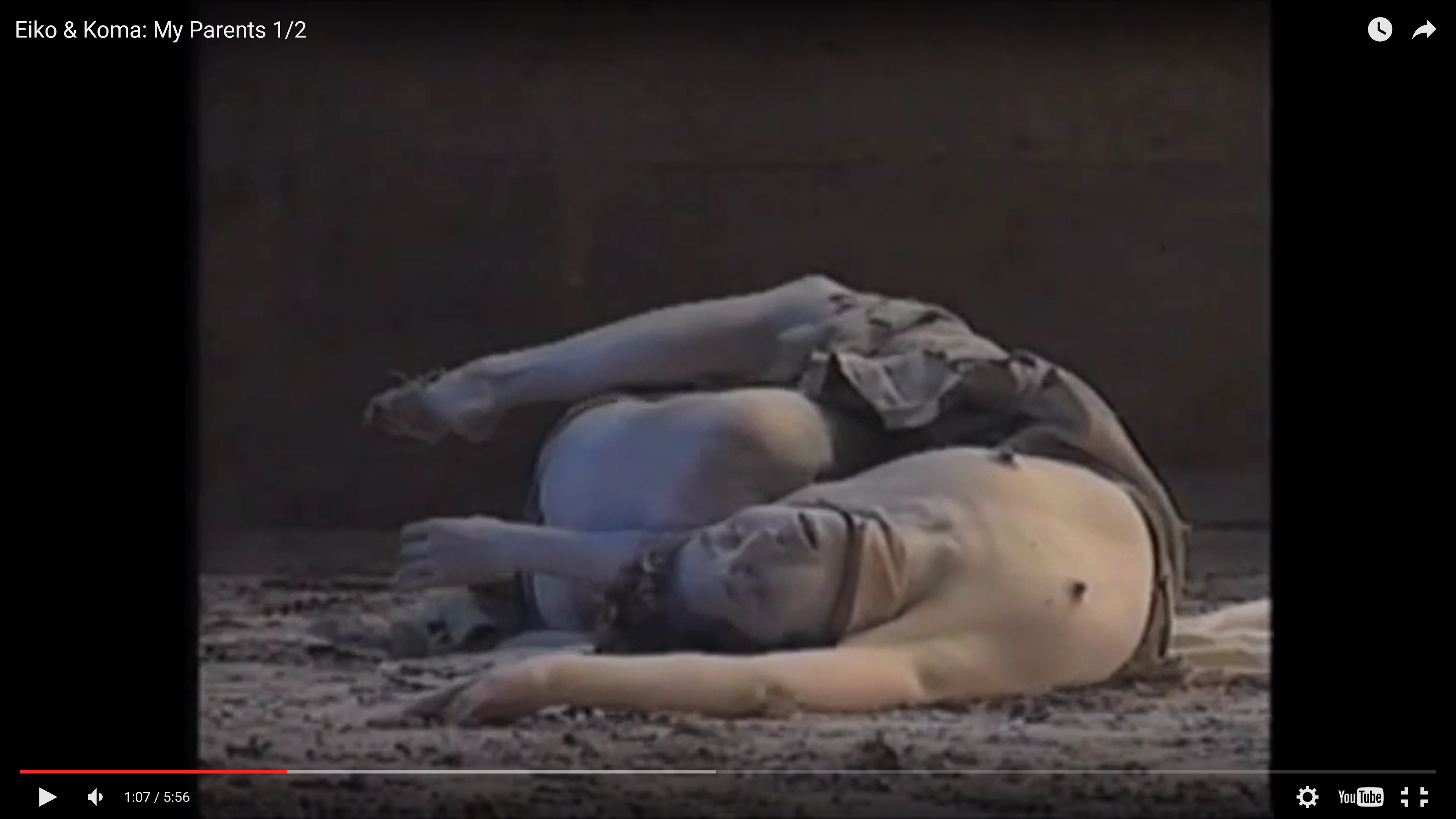
@ 1:07 – “Land” – twisting of body against the ground/ in a writhing movement.
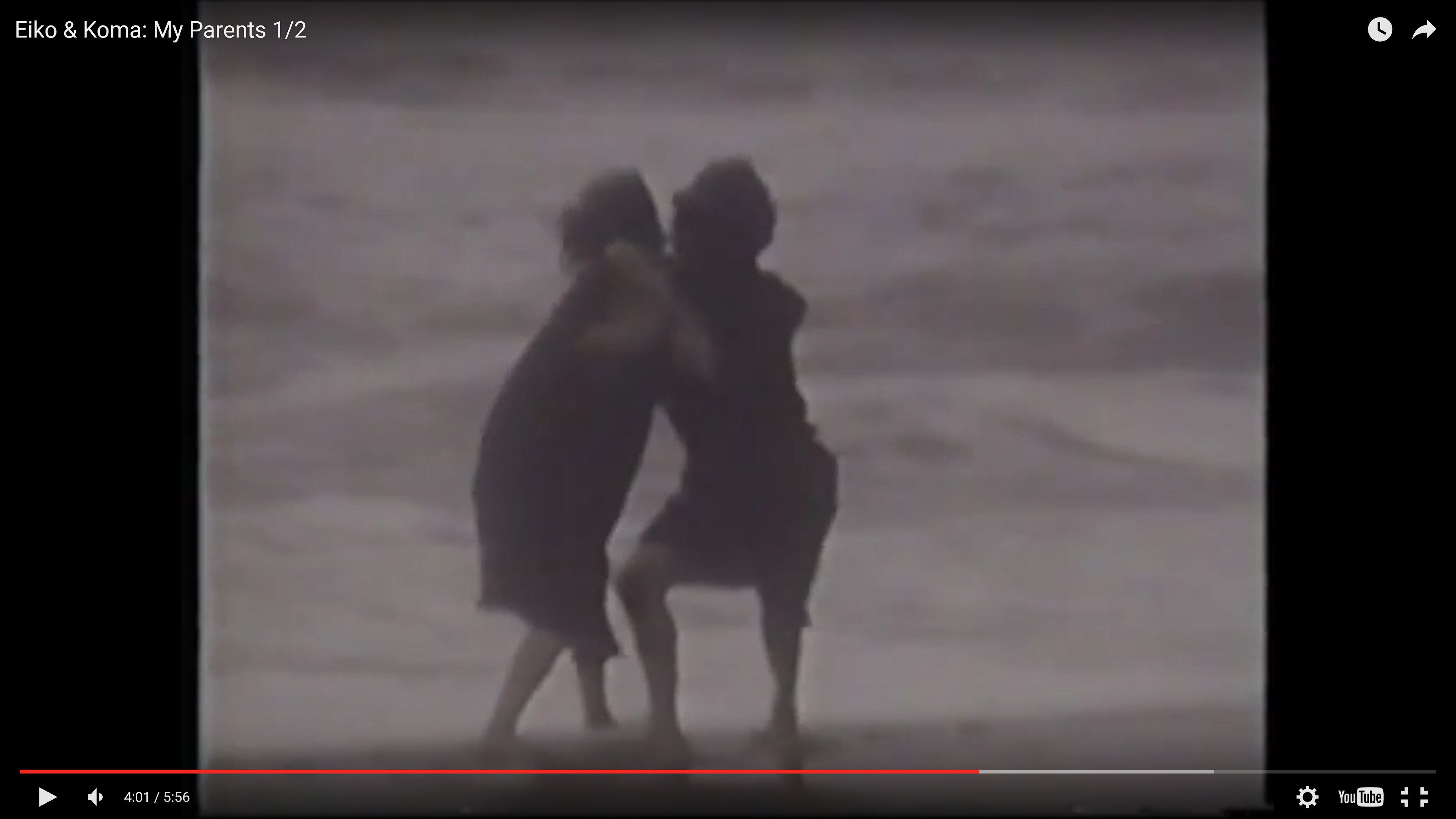
@ 4:01 – crab walking with elbows crossed between two people, then falling and trying to stand up again through the action of supporting each other with their arms interlocked.
The mover’s relationship to “the box”:
For most parts of the film, the movers are the main focus as they are located in the centre.
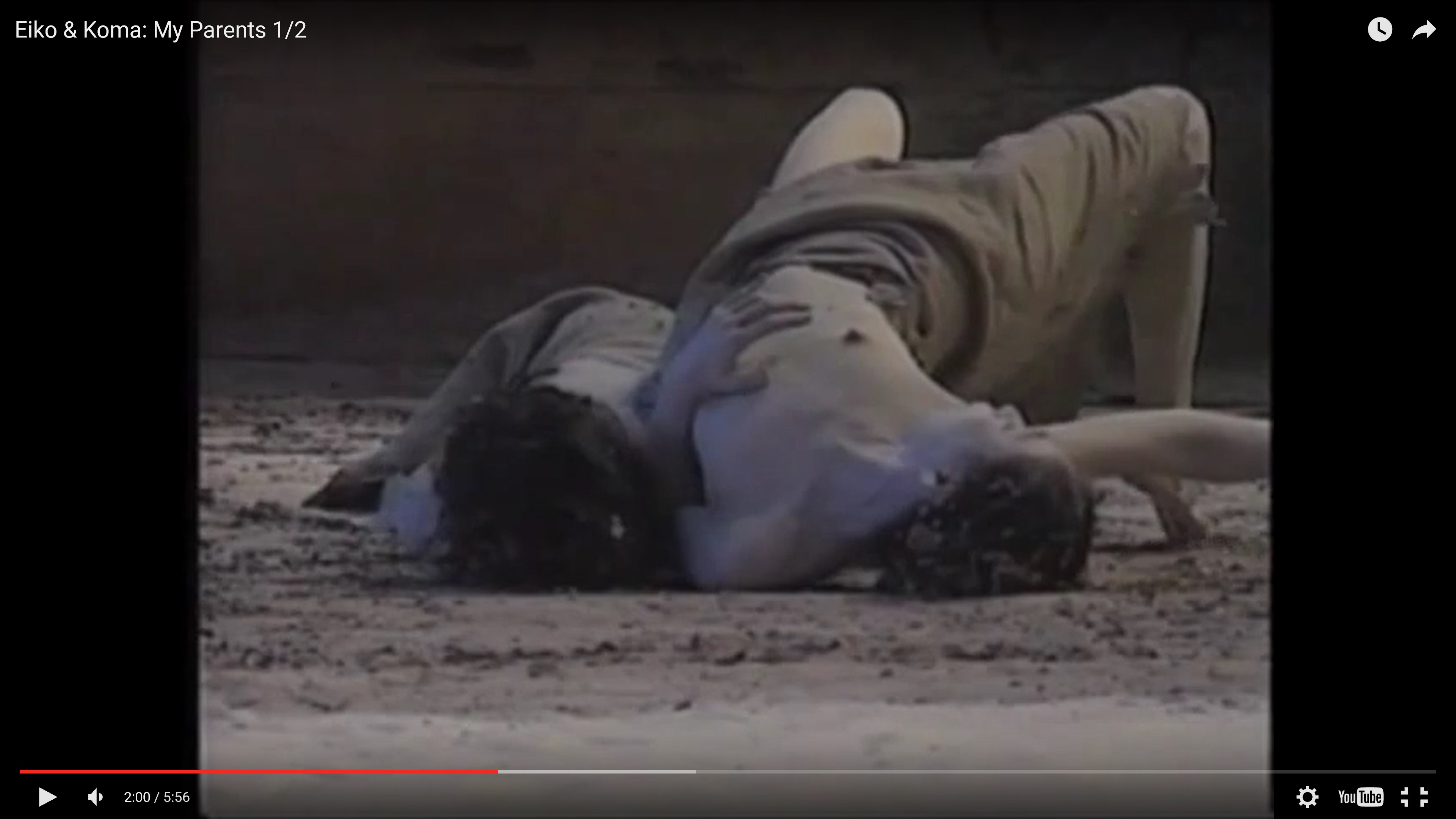
In the second segment (1:05 – 2:22) showing a remake version of “Land”, Oregon, WI: ADF Video, 1995 by Eiko and Koma, the movers were filmed on ground level with slow controlled panning of the camera to the right and slow gradual zooming out of the lens. We observe them in a third person point of view on their specially designed space of dirt and a neutral colour scheme achieved with the muted tones of their clothing and dim lighting.
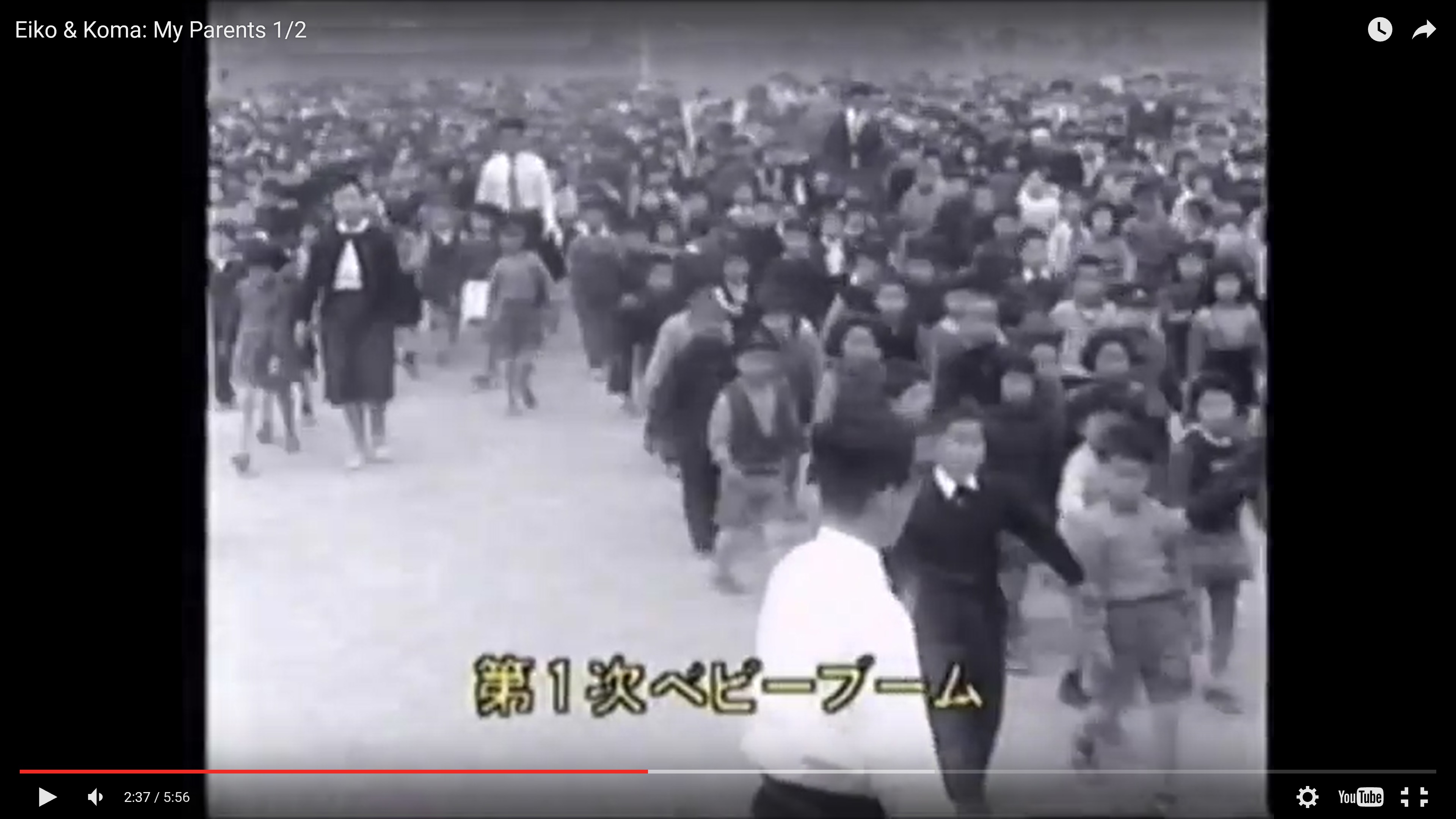
After the third segment (2:23 – 3:58) showing some old films of Japan in the past, in the fourth segment (3:59 – 5:56), we see two people moving away from the lens towards a backdrop of a sea.
Sound:
Crickets, birds chirping, sounds of nature, a wind instrument playing in the background, a person narrating at a time
Speed:
Slow motion
Dynamics:
Dramatic changes in actions and expressions,
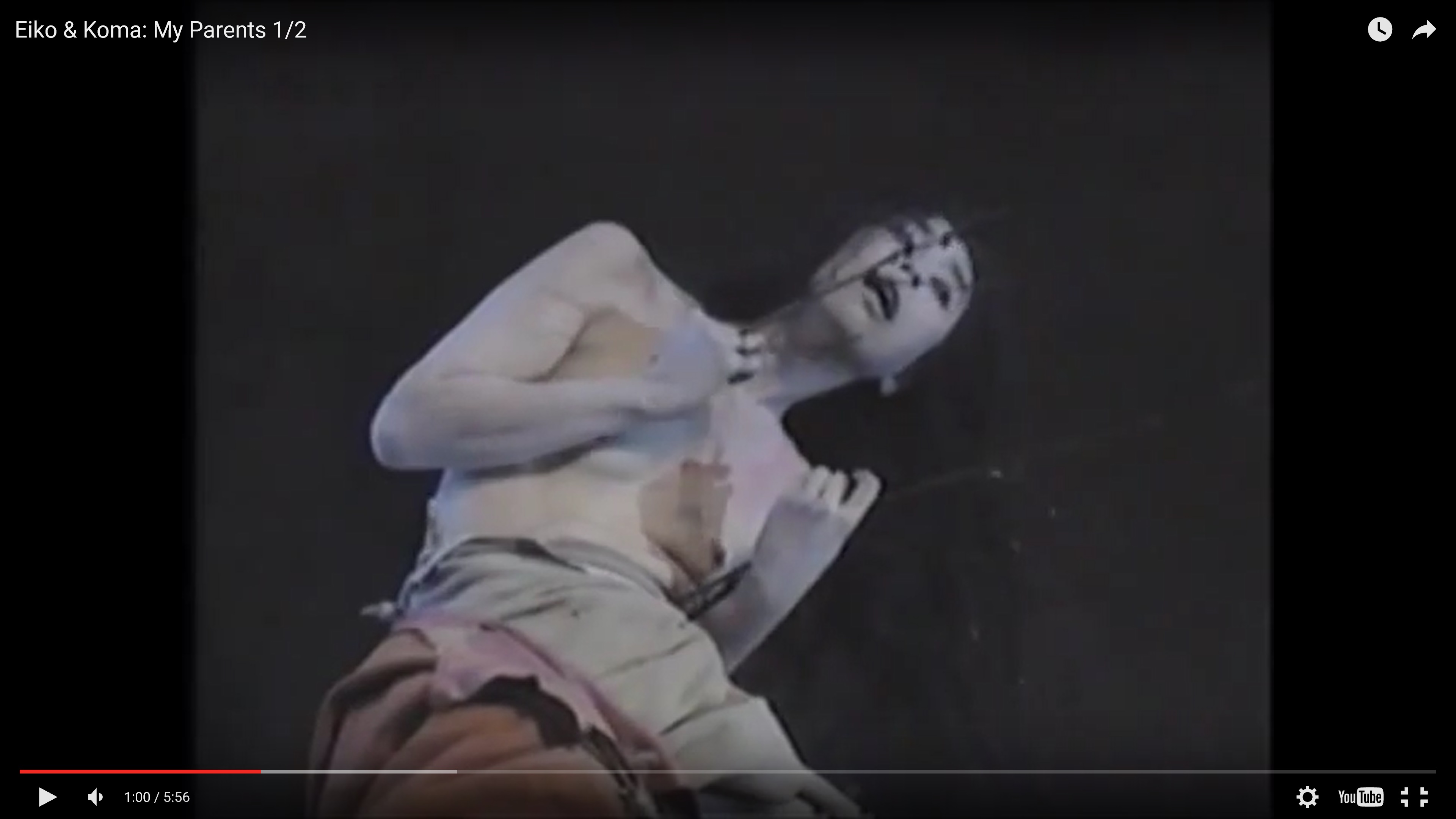
Example 1 – A lady grabbing onto twigs while her expression changes slowly from one that appears as if she was in a trance (eyes half-closed and mouth hanging open uncontrollably) into an expression of shock, as if she was being stabbed with twigs @ 1:00.
From page 104 of Eiko and Koma: Dance Philosophy and Aesthetic by Shoko Yamahata Letton,
Some mountains are males, and others are females. These mountains make love at night and they separate before we know what happened. – Eiko
Example 2 – Two people who appear half-dressed squirming like worms or slithering like snakes on the ground, where the ground is dirt and soil, a scene described in the video as ‘Land’ where two mountains were said to be making love. Their body appear contorted in twisted positions which feels uncanny as they appear almost nonhuman @ 2:00.
Motion Control
Gestures & movement:
Quick darting movement of the camera.
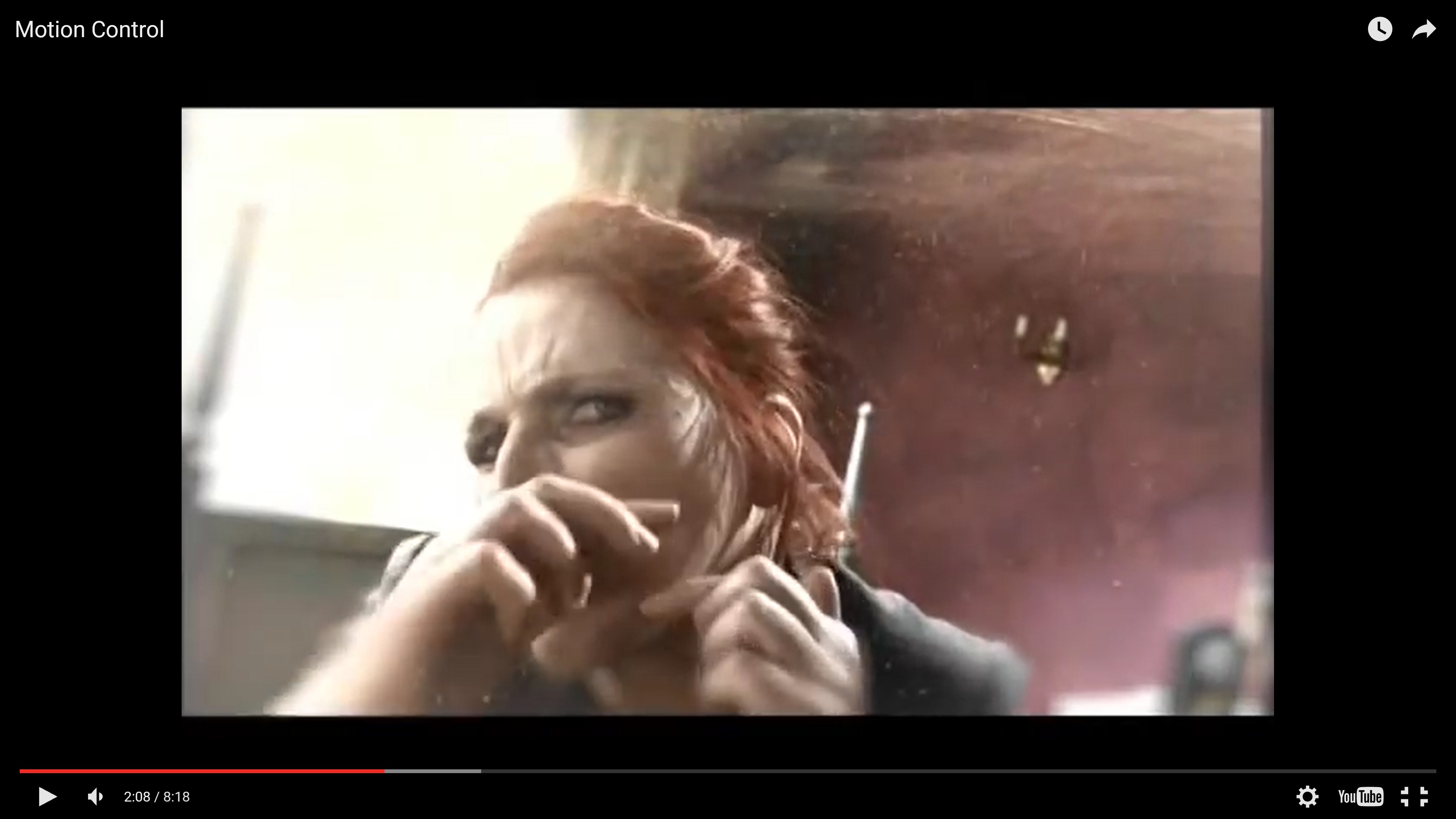
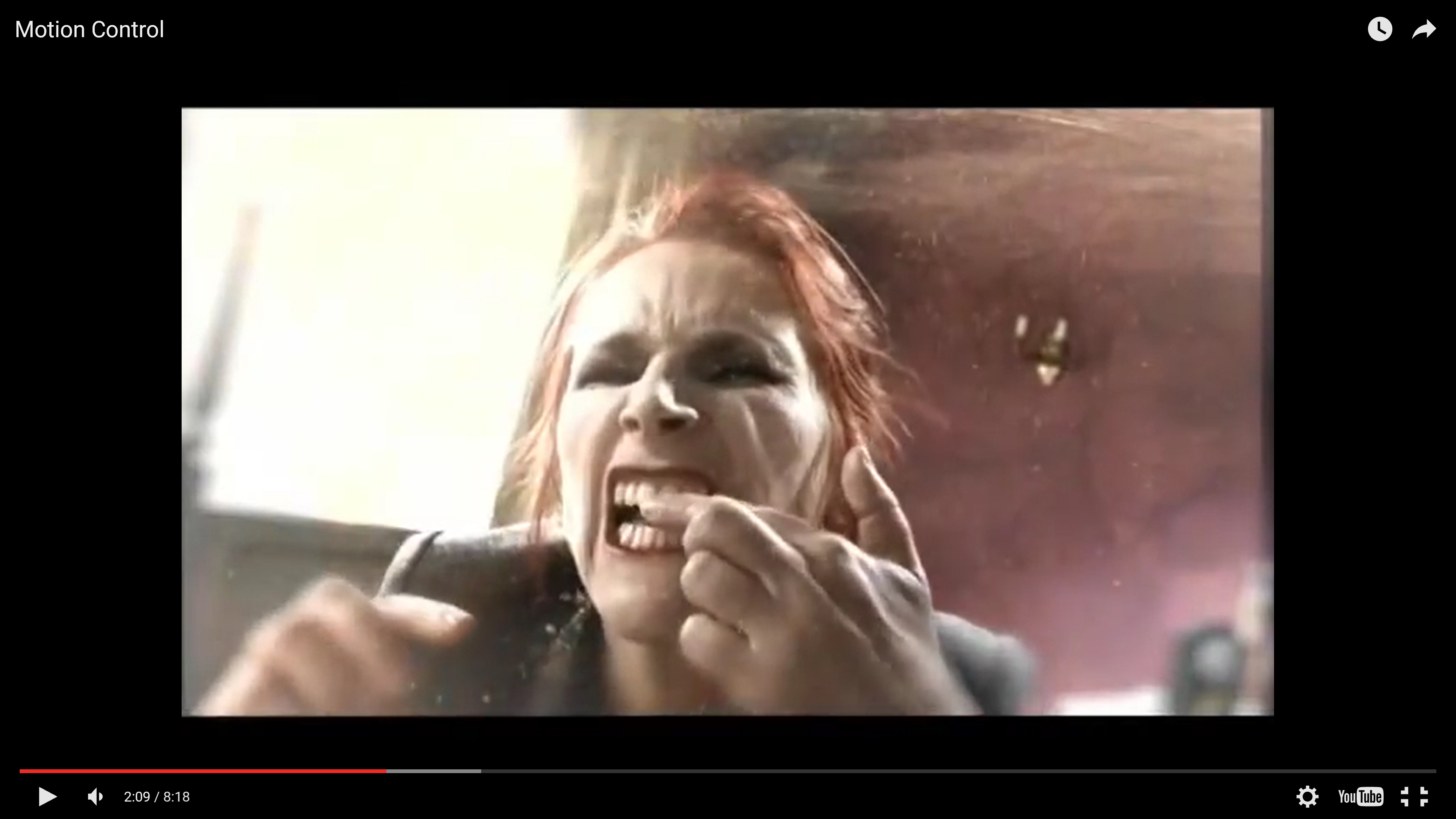
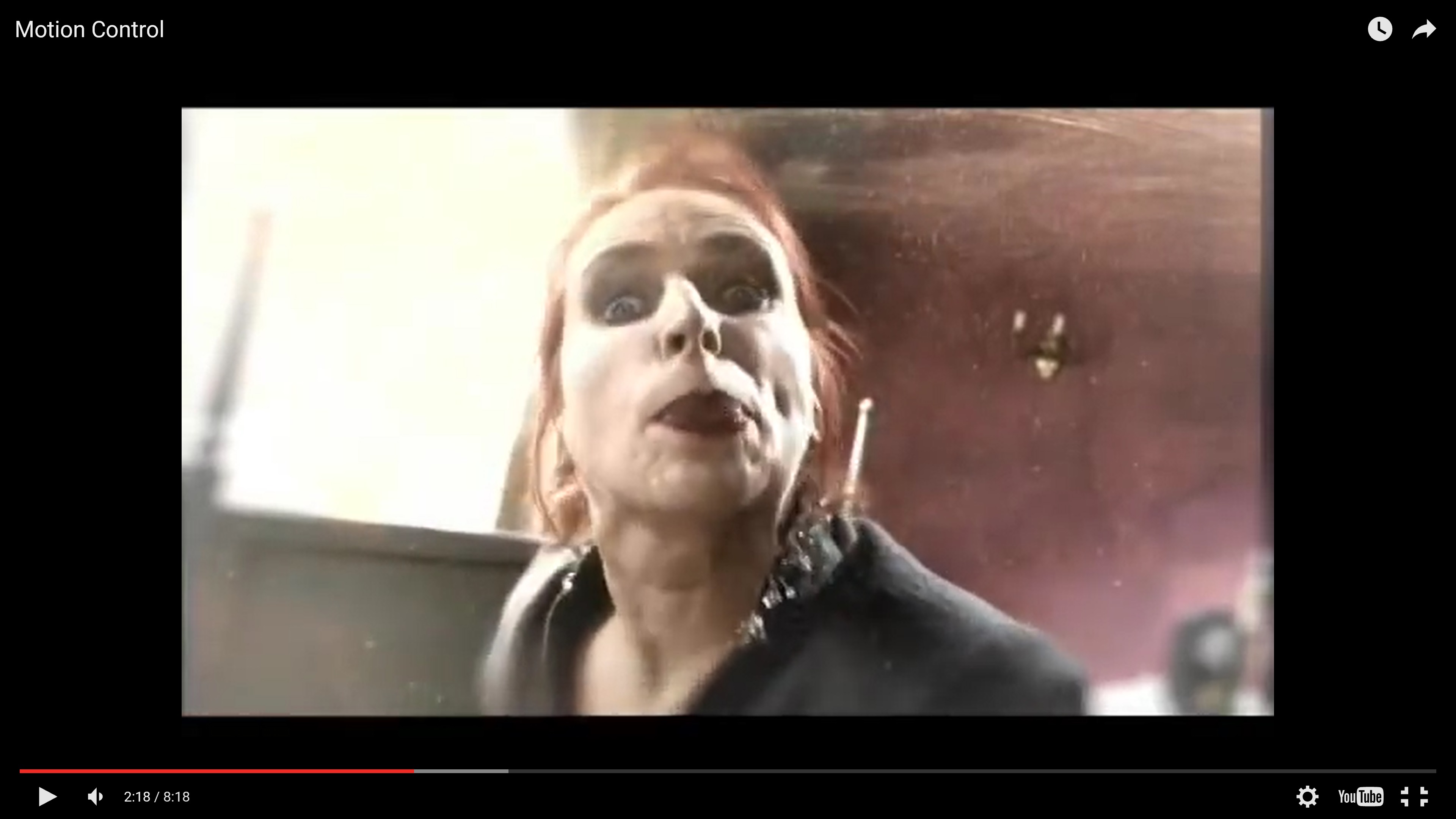
Liz Aggiss interacts with the camera and looks at us with a confrontational gaze. She made several unrefined gestures such as swiping her nose @ 2:08 and cleaning her teeth with her fingers @ 2:09, then spitting at the camera (at us) @2:18.
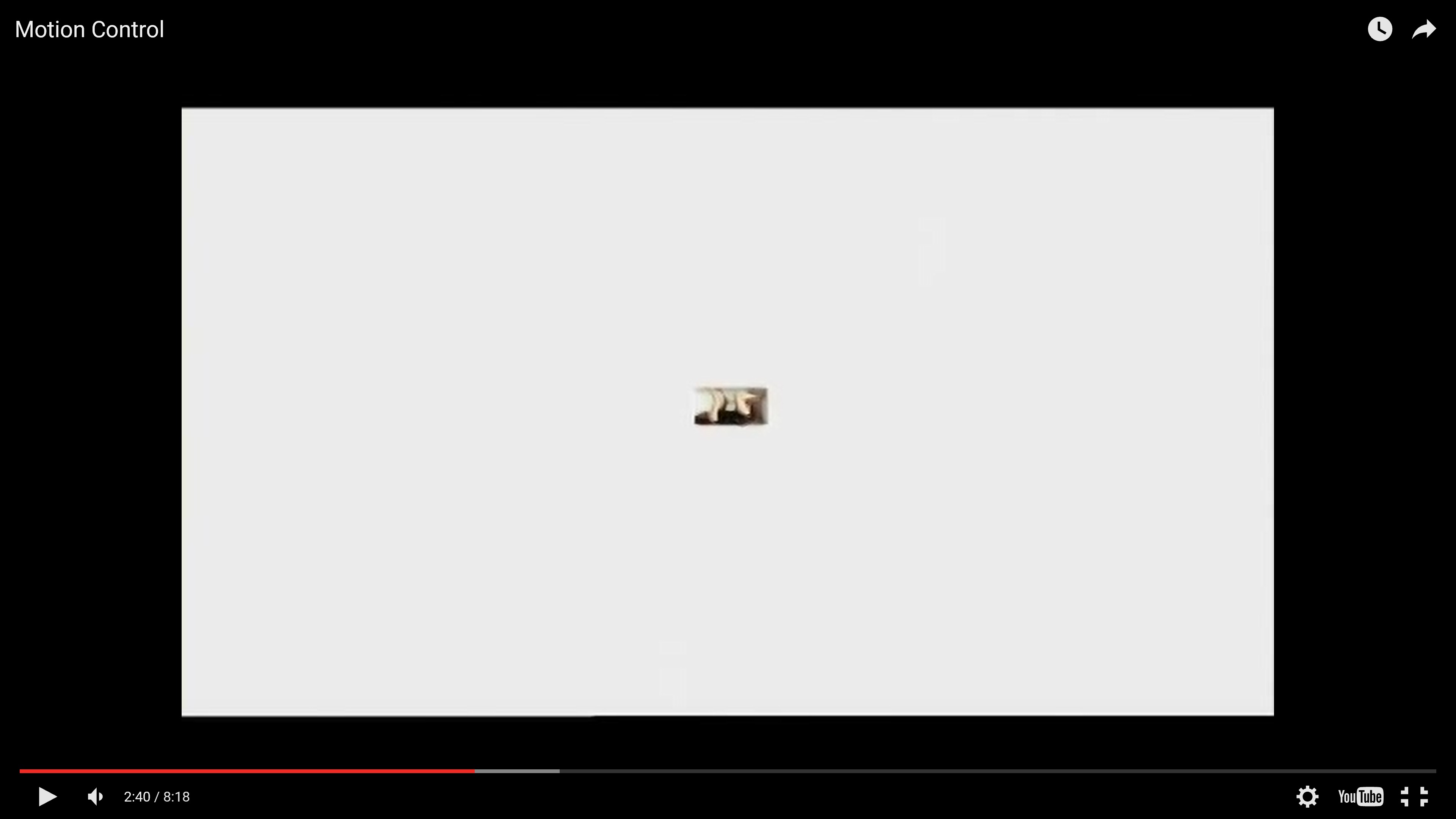
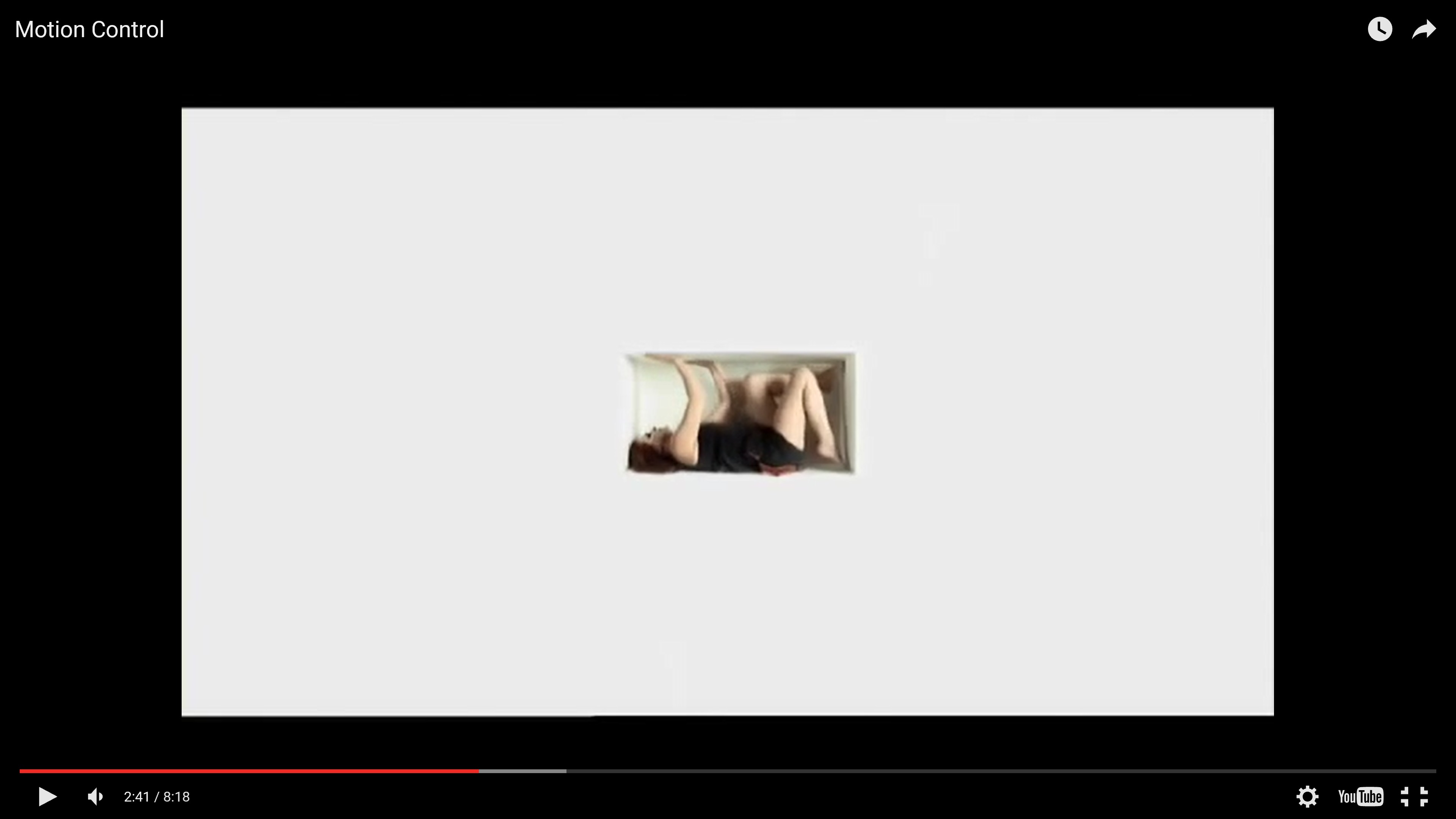
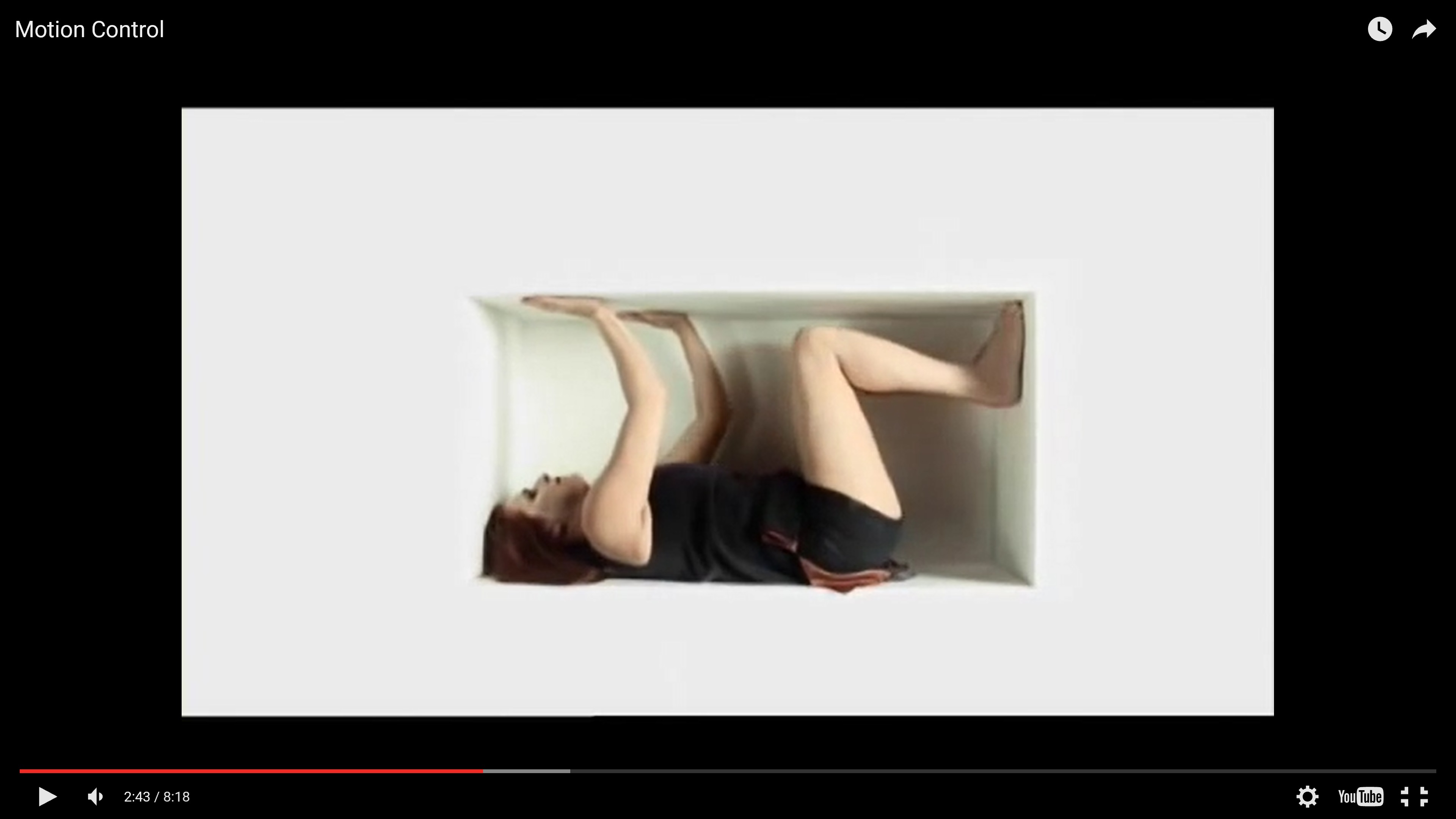
2:40 – 2:43, Liz Aggiss starts to push the walls of the confine space she is in, exhibiting acts of a claustrophobic.
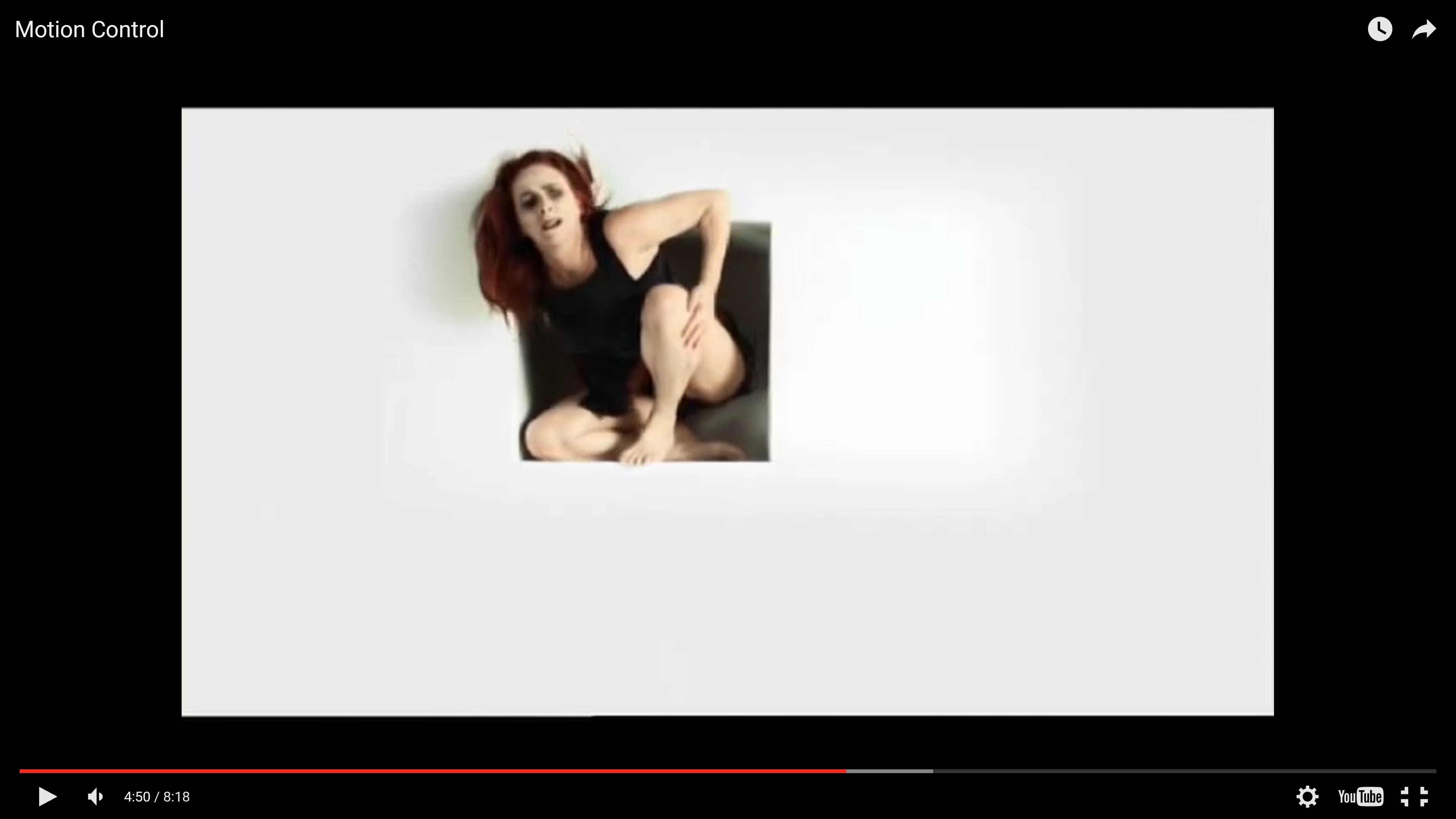
@ 4:50, Liz Aggiss had expressions of fear as she jumps out of a cubicle with her mouth wide open.
The mover’s relationship to “the box”:
We view in the first person point of view, where our eyes are represented by the camera lens – inferred from the circular vignetting along the edges of the rectangular screen of the box.
Sound:
At the beginning, we hear sound distortions resembling rapid fast forwarding and rewinding of a sound clip/ an operating vacuum cleaner.

@ 1:31, we can hear slight inputs of bone-cracking sound when Liz Aggiss moves her body and head. Sounds like dubstep can also be heard.
@ 2:08, we hear swiping, scrubbing and spitting sound.
@ 2:40, we hear creaking sound as Liz Aggiss pushes against the walls of the cubicle and sound of her body rubbing against the smooth walls along with deep, intense breathing.
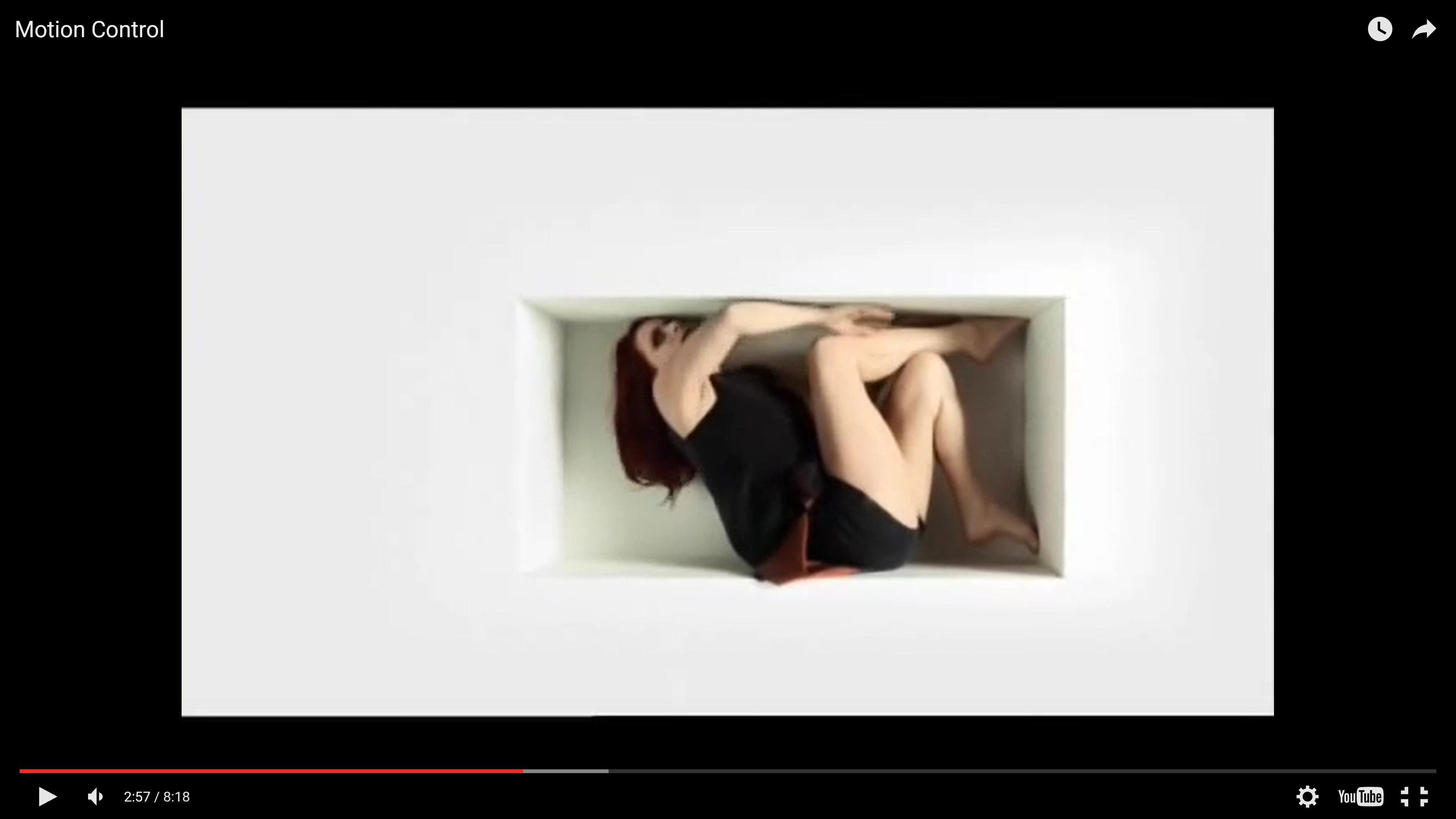
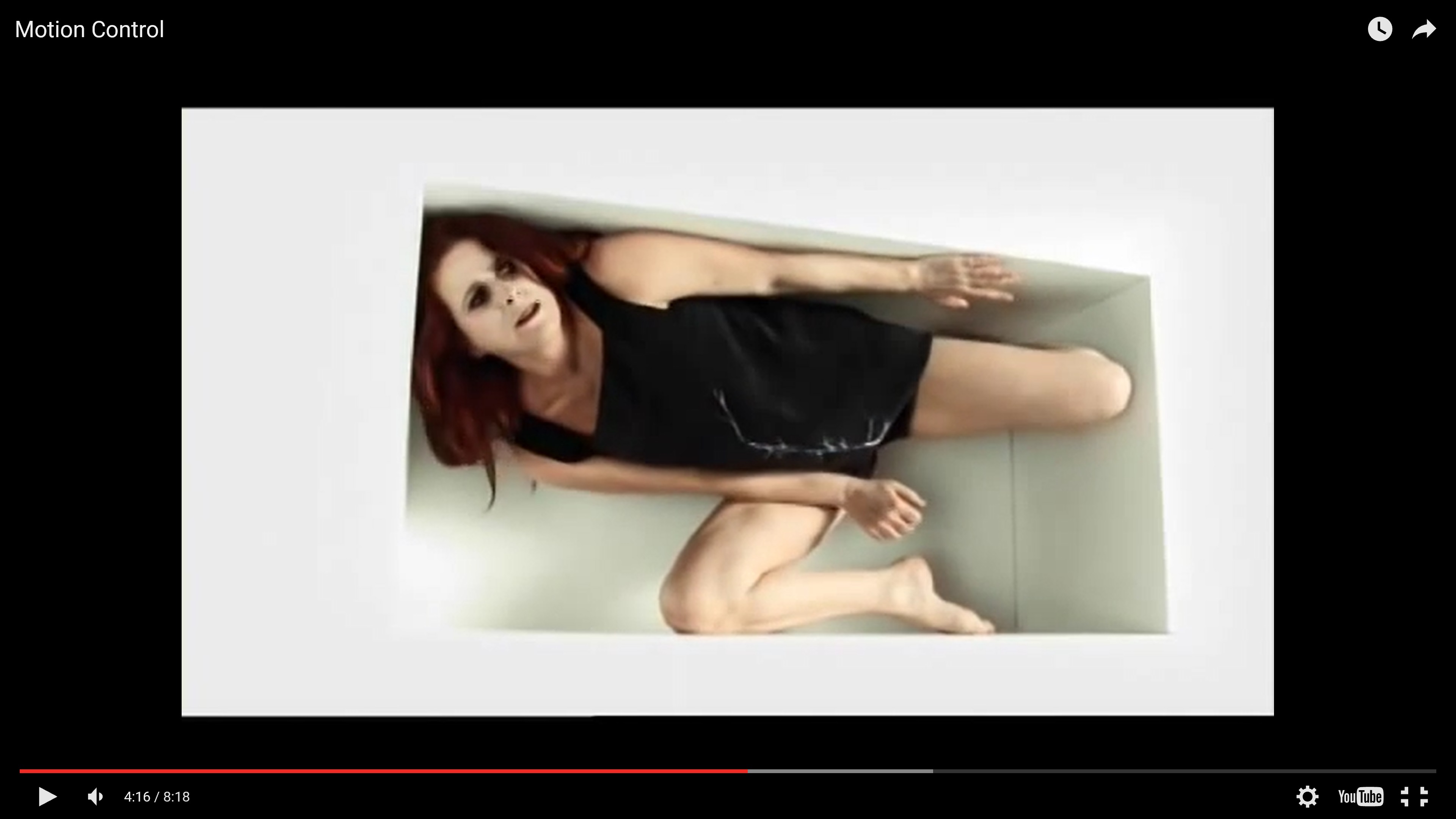
@ 2:57, we hear a short excerpt of a music playing with a faint voice singing along to the tune which stops abruptly and plays again @4:16.
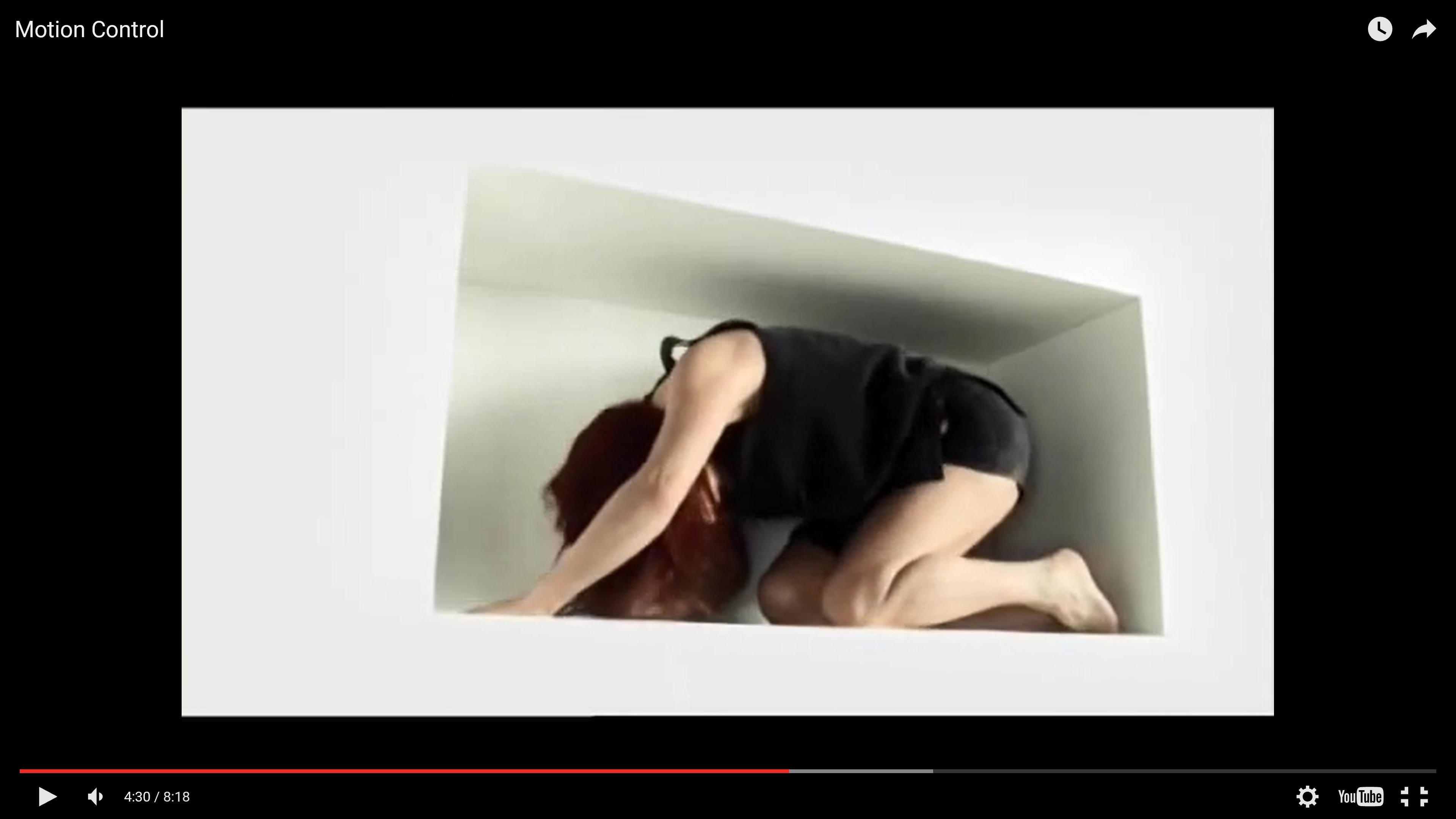
@ 4:30, as the lady back against one of the walls, we hear a clanking sound, almost as if a machine has started operating. The clanking and creaking sounds grew as the wall starts to sink inwards shrinking the space that Liz Aggiss is in.
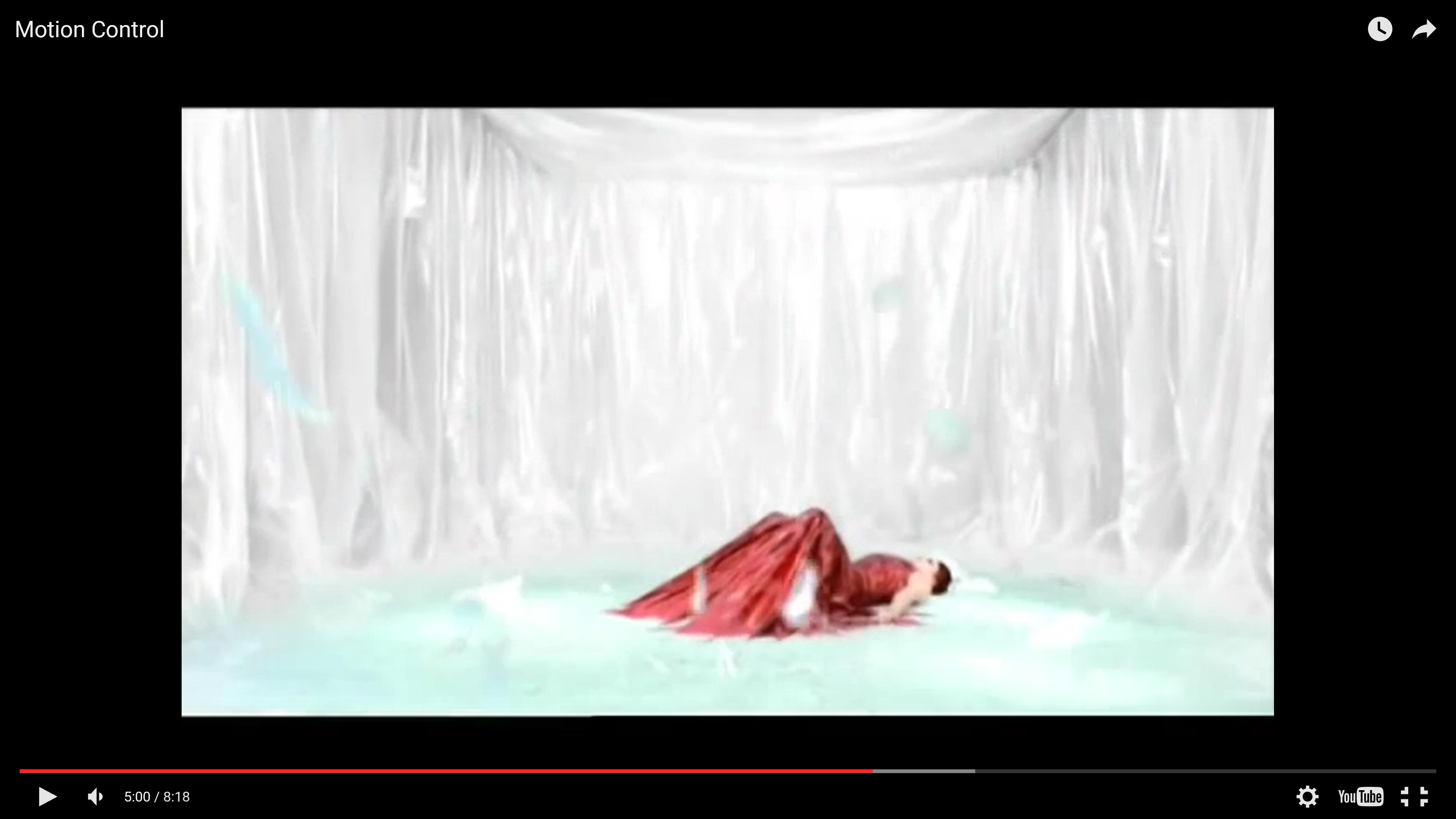
@ 5:00, the music starts to play again after the sound of breaking glass. The music starts to sound like an opera.
Speed:
Faster than normal speed that is similar to what a person with high adrenaline rush and high anxiety would experience.
Dynamics:
Dramatic changes in actions,
@ 0:06, the screen lights up in a blink introducing us to what looks like soil and sand.
@ 0:20, we passed through a door in a blink into an apartment space towards a cat (that was frightened and ran away)
@ 0:28, we passed through another door into a bedroom where Liz Aggiss, who was wearing a long gown, sleeps on.
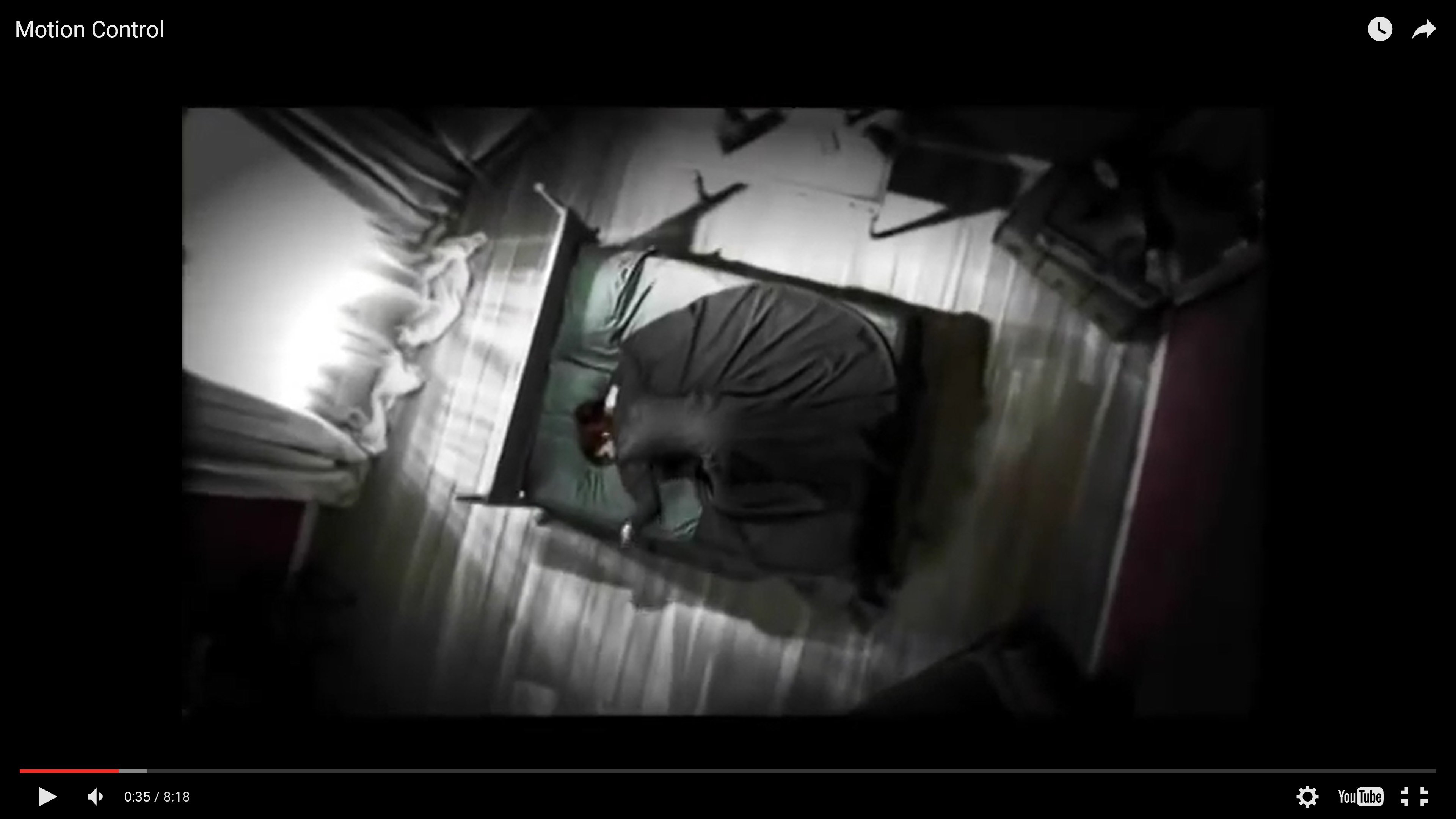
@ 0:35, we ascending to the air from the ground and viewed Liz Aggiss from a high angle.
@ 2.43, we entered Liz Aggiss’s head and is transported to a white/ blank/ empty landscape with a small cubicle in it. Liz Aggiss lies in the cubicle and the cubicle starts to shrink, forcing her to jump out of the white landscape into a bizarre landscape where she wears a red dress which was attached to the ground along the edges of the dress.
Depth of perception (how we see things in 3D):
Abrupt movement of camera where the camera tilts in various sharp angles, explaining rough handling of the camera in the first scene where our role comes out from underground. At the same time, the perception of space was described with mostly low angles inviting us into an ant’s point of view.
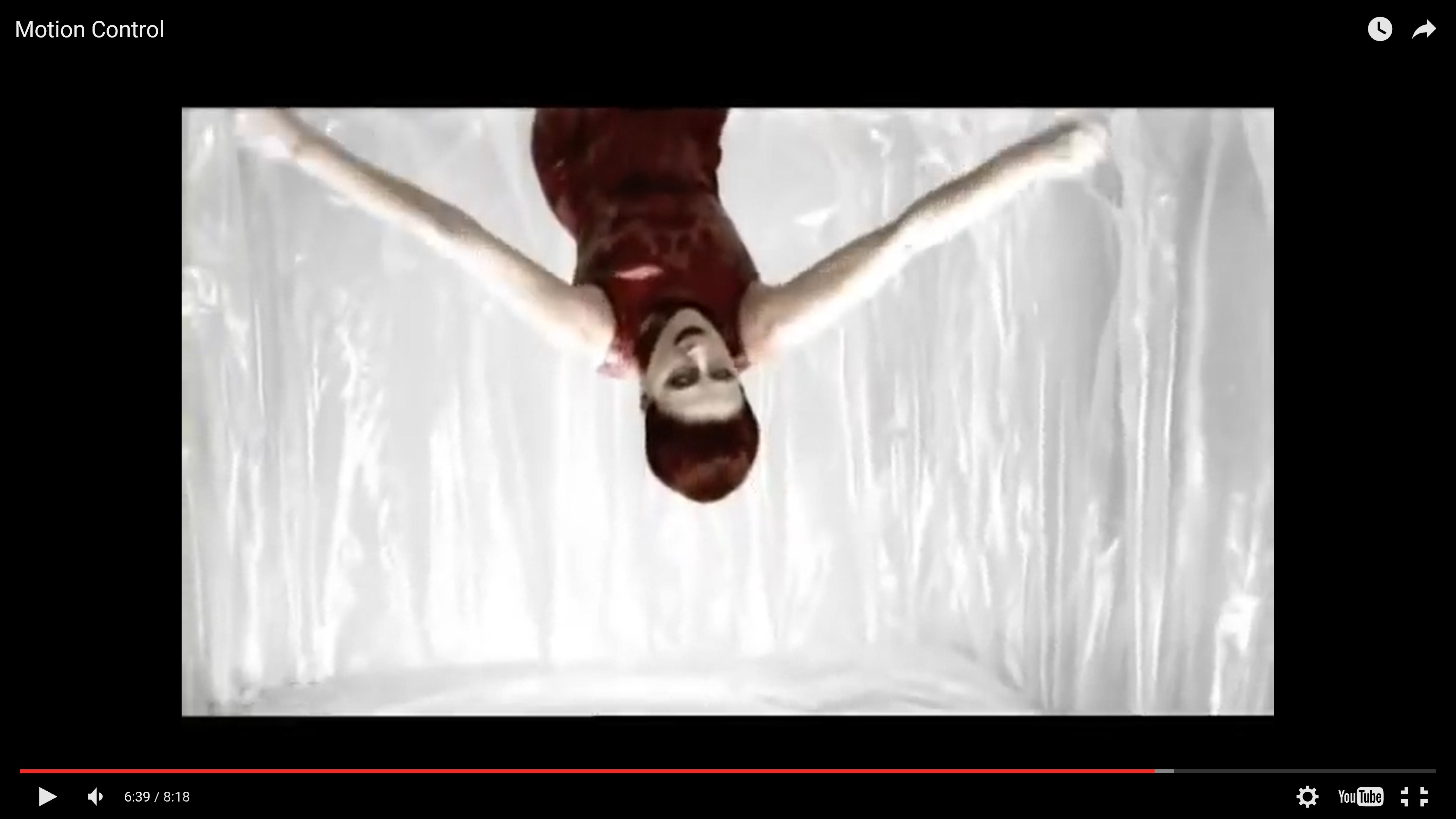
However @ 0:35, when the angle suddenly changes from low to high, we get the impression that our role is something that can fly. Liz Aggiss became the centre of attention and she interacts with the camera and with us through the screen. @ 6:39, the camera tilts 180 degrees, and Liz Aggiss who was standing shifted to be in an upside-down-hanging position.
